

STEPHEN EICHHORN Voidground
Cover image: AgaveAgave, 2023
STEPHEN EICHHORN
Voidground
June 14 - August 23, 2024
Interview by Pia Singh

Photographs by Nathan Keay
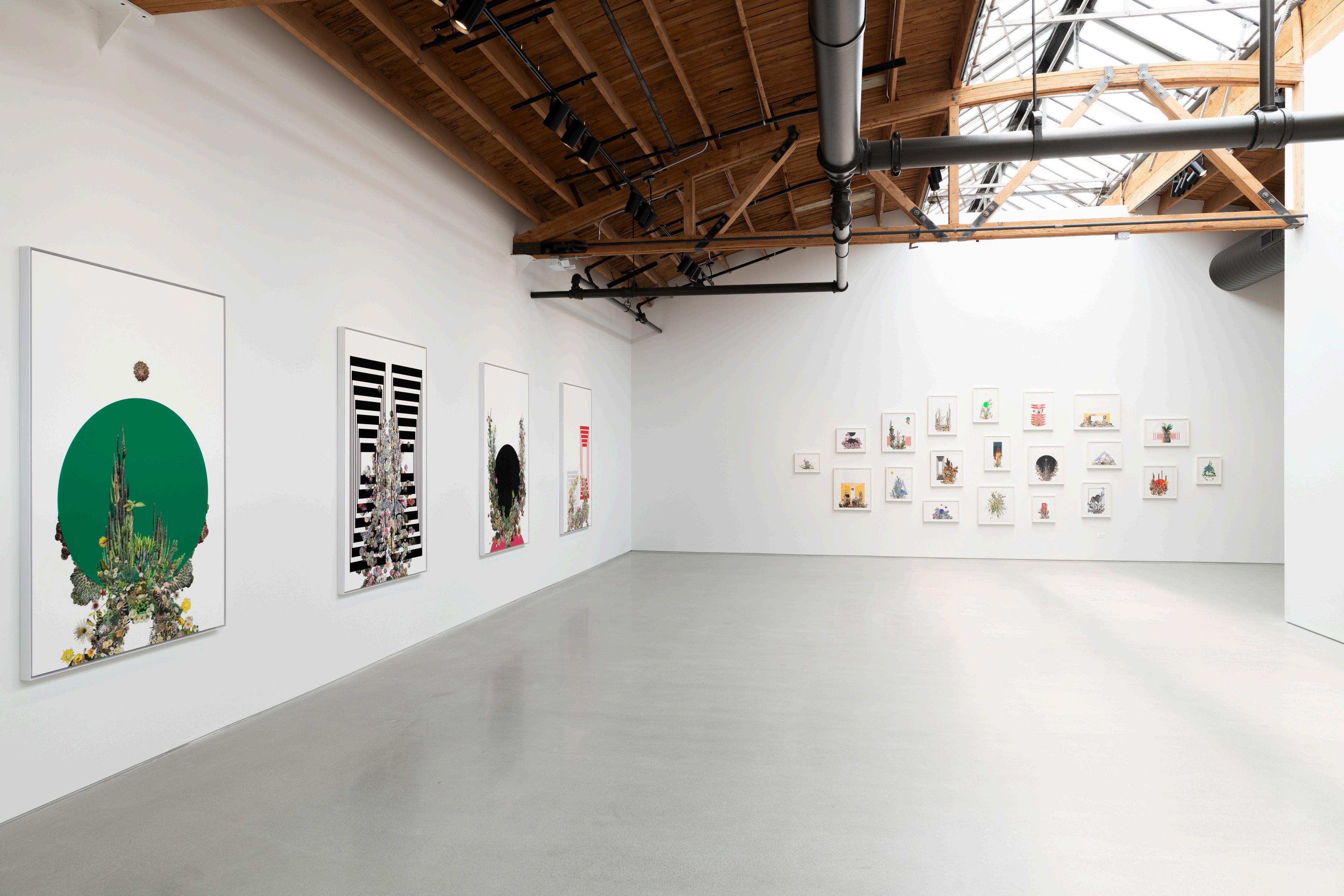

Stephen Eichhorn’s art practice revolves around the deceptively simple plant by exploring a range of dichotomies located within its physical and spiritual properties. Intricately cut-out images of grasses, cacti, succulents and blooming flowers are placed, piled and arranged on colorful paper, board, and aluminum, creating new forms that offer meditations on consciousness and time. Using design elements and materials sourced from botany textbooks and other publications, these works on paper and panel heighten our connection to the natural and man-made climates that surround us.
Voidground introduces another element in the figure-ground principle, a compositional device that guides dimensional understanding in images. In addition to the foreground, middle ground or background on a two-dimensional plane - which triggers the viewers focus on the composition by alluding to a third dimension - voidground put the void front and center (or behind) as a perceptual device that metaphorically alludes to liminal space. These voids, or portals, share the surface with flora to create focal points that simultaneously herald absence and presence. This complicated dimensionality can create a visceral response while also encouraging a closer look and, perhaps, selfexploration
With Voidground, the binding visual element is color, which as a descriptive tool, represents a variety of emotional complexities that can be shared by many but felt individually. As an origin story, it could be argued that the color wheel itself can be traced back to the organization of nature: flora. And it is from this point of view, that Eichhorn’s exploration of temporality, or the state of existing within our earthly life, evolves From dark, light, familiar and warming to the bright, reflective, strange and visceral, color’s role in these artworks reflects the world around us, just as it exists in the pigments of plants.
Voidground invites the viewer on a journey of self-awareness with the void as transition, color as guide and flora as bond This artwork encourages long, slow looks from the individual in order to discover their own path through the multi-dimensional complexities that parallels our own moment in time. Where else but situated in the wonders of nature can we find a level of transparency that can only be truly revealed with patience and understanding.

Interview by Pia Singh
Pia: I remember last we met, you brought up the metaphysical in relation to your work. The presence of the void, which is also in the show's title ‘Voidground’, also points to a place where one begins to think about space and time, and the historical or philosophical implications of a collage-making practice.
Stephen: Well, in the content of my collages, some of these plants present either moments of being in bloom that could transpire over a period of not even 24 hours, or growth cycles that might be centuries-long. And that odd, constant shift of what time means, especially outside of a human sense of time, is very important to me. I think the experience of the natural world holds so many contradictions. For example, you might expect something that’s grown really large to have taken a very long time, or find that there’s this tiny thing that's been living off sea spray and mist in the brutal desert that’s like several hundred years old (that will probably outlive us all!)
The generational battle between plants of different typologies is linked to our evolution.
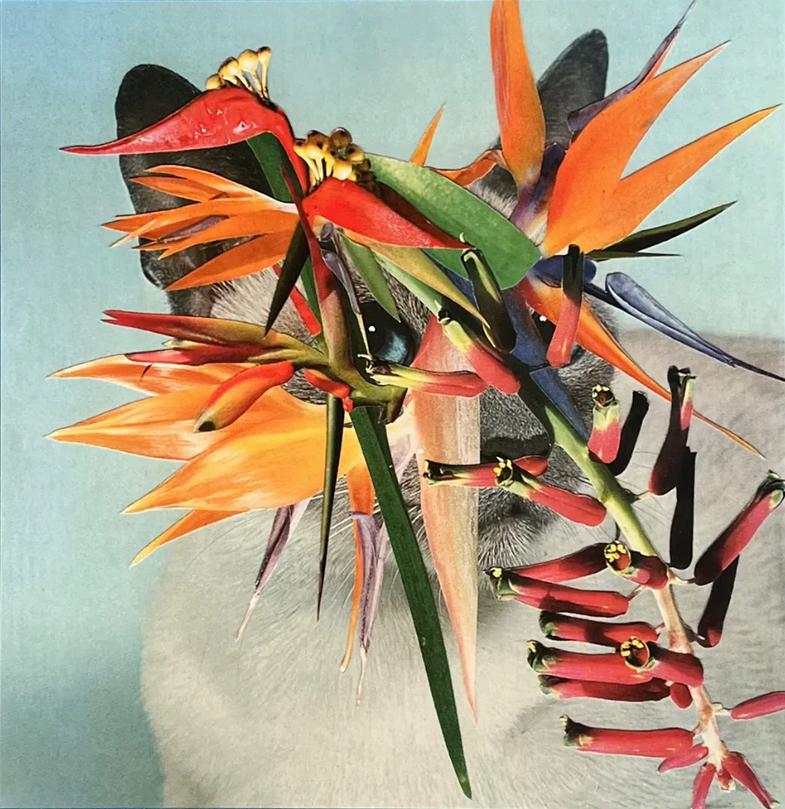
PS: Is this what initially drew you to succulents and cacti?
SE: The geometry and architecture of these specific plants allowed me to imagine a kind of worldbuilding. Initially, they formed a bridge in the studio between two bodies of work; one based on cats and another on plants. As a joke I placed an element from one onto the other, removing a cacti from its context to see what might happen. My process is driven by source material to a large extent. For example, I’ll find images of a Copiapoa
Cover of Cats and Plants, 2018 cacti and become obsessed. This leads me to different types of cacti that spurs a body of work that leads me to other source material. It makes it oddly easy and difficult, adding a different level of compulsivity to the process.
PS: So much of the compositional flow seems to be compelled by source material As someone thinking through color, shape and structure, what are the parameters you set for yourself?
SE: This started in school while studying Sculpture at SAIC I did quite a bit of drawing before coming into the program, and had always been interested in architecture. Architecture, history, and design began to come into focus. After school, setting up my studio, I had a certain amount of control over these parameters I set for myself. For example, I decided not to use material from National Geographic or Life Magazine, sources that are ubiquitous with collage. It creates a tone of visceral nostalgia, and that’s not my intent with collage I like to push myself in terms of the craft of the hand, and what things I can do in terms of cutting out all of the components and arranging them that show and hide the hand.
PS: I think there’s also the craft of remaking photographic time, yes? There’s a geometric, maybe even synthetic aspect when plants are lit in a specific way.
SE: Sometimes I’ll find myself looking at the light source, and then it begins to come up in source material I’m studying. One piece might be dependent on a a specific angle of the light source, in others I’ll fixate on a genealogy. In Agave, Agave, 2023, I wanted to study a certain type of aloe and agave with passion flowers. Or in another case, there’s a composition dictated by seed pods.
In another, there were no real parameters set other than a need to create a kind of symmetry A folding inward and outward moment through repeating components that I also try to acknowledge through the presence of a void.
PS: Translating two-dimensional image to three-dimensional space, or potentially pointing to a fourth in a metaphysical sense, you seem to apprehend plant life by the meanings space offers. Does the void hold specific potential to you, is it full or is it empty, or a slit through which we access another world?
SE: Definitely. I think of the void as a window, or a threshold moment. I grew up in a home where my father was a minister of the Lutheran Church. I’m beginning to acknowledge this might have shaped my sense of ritual, mythology, religious iconography and such.

Agave, Agave, 2023 (detail)
PS: The sacred geometry of plants
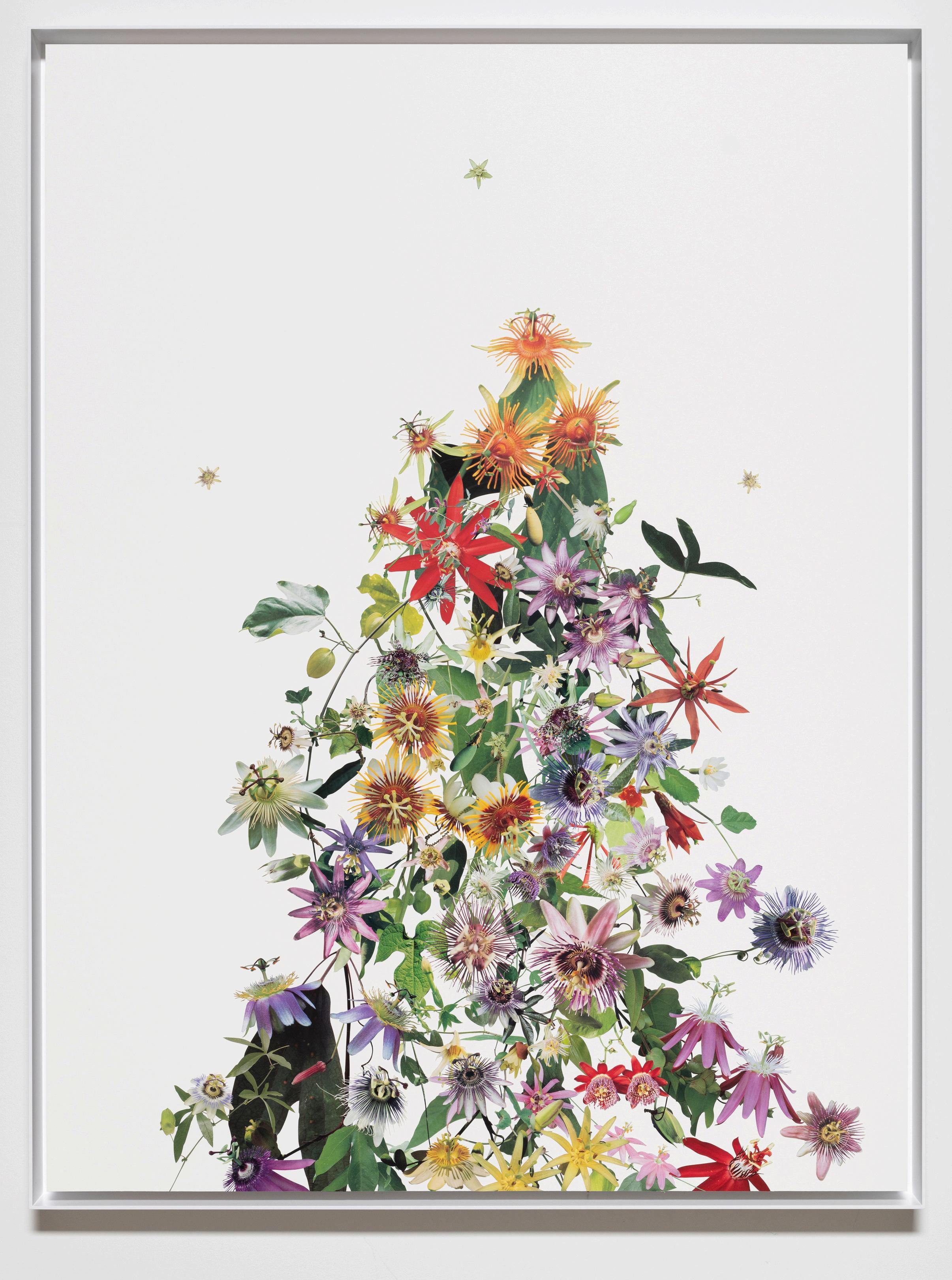
SE: Yes, I think if you look at the architecture of sacred spaces, its composition touches you. For example, I was very drawn to the architecture of altars. (Pointing to Altar (Golden)). If I were to think of this as something that takes up space, as though an altar, something creeps up but doesn’t necessarily fully translate as a ritual space
PS: But then you have these points of reference as in Spine (Meditations) - indicators of some other presence, scattered in the upper half, suspended against gravity. They don’t abide to single point perspective as other elements do.
SE: The cacti areolas, (that the cactus spines grow from)? Yes, they intentionally float in the void. In this other piece, Passion Flower (Slumber), I get overt with the connection between passion flower and not necessarily its relation to religion. How parts of the passion flower relate to the crucified body of Christ, its 72 radial filaments to a crown of thorns, 3 stigma’s symbolize 3 nails, etc The plant doesn’t care about these meanings being imposed on it, but it gets linked. Stigmatized by our perception. Thinking about who ascribes meaning and toward what ends?
PS: This brings me to think about the interrelationship between belief rituals and nature, be it in medicinal or healing practices in Ayurveda or as used in shamanist ritual
SE: Yes, there’s Peyote in this piece Folding, Unfolding Time, but its composed of real and false peyote, which is poisonous if consumed The threshold between healing and death, folding and unfolding time. I like to think of liminal spaces through collage. Some elements fold under and over harder geometric forms, creating different moments where time creeps or intersects between the natural and man-made. So many architects have turned to nature for inspiration. Structurally,
Passion Flower (Slumber), 2023
the organic and plastic coexist, coming together and falling apart.
PS: In the circular compositions, the conversation feels more centered on the void and ground In other pieces, (grass works) it feels like there’s something between the line, surface, and three-dimensional floral bodies that rub up against one another. There’s also something a bit hallucinatory the longer the eye stays with vivid flowers and grasses
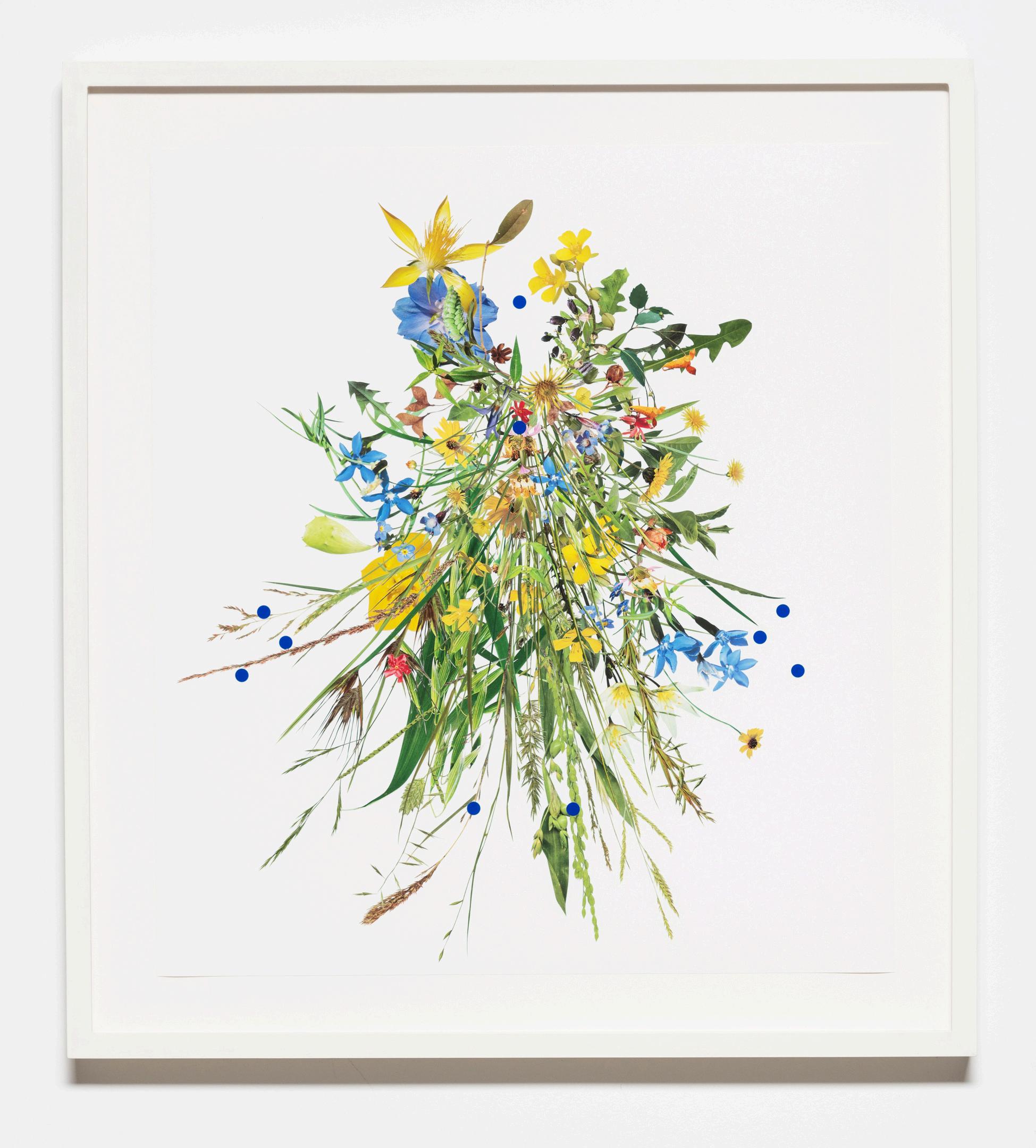
SE: There’s a kind of puzzle piecing together in the cacti and succulent works that is very different from grass and floral works In the grasses, I put myself to the task of looking for freshness in the source material. You know when you need to locate the newness of something you ’ ve gotten to know too well? So I hand selected, cut and archived these pieces in an attempt to close some smaller, maybe larger loops, for my own studio practice. In other conversations, the idea of looking back to look forward was brought up I found myself referencing things from history, be it personal or otherwise, to construct models for the future Touching on some works I’d done in the past, this source material had been building up in my studio for quite some time. Maybe I was waiting for the right moment, even though a lot of the work was made in the past two years.
PS: That being said, it’s also grass that predates you finding the image of it And who knows if its still growing somewhere.
SE: These pieces allowed me to be more fluid. I worked on these alongside others in the studio. There was less of a predetermined process that allowed me to tinker with them over time. In In and Out of the Garden (Spring), I worked on it for months, and In And Out of the Garden (Summer), it came about quite instinctually
PS: There’s this space above the grasses that makes me think of a veil, between us and nature. How the pandemic lifted that veil reminding us how disconnected we’ve been
Passion Flower (Slumber), 2023

from nature all this time. Do you feel a shift in this sense, in our relation to naturederived time?
SE: I think we ’ re constantly confronted by the space we live in. In the pandemic, I ended up going on really long walks with my newborn kid in a stroller to get him to nap. It would be hours long, and I would take him to our backyard and while he was napping, I’d sit and notice things moving slower. Media consumption shifted, we began to notice more It’s almost as though the whole world became void; pure space of endless infinite potential, and a feeling of the end of days trailed, all folded into one.
PS: But there was also the tendency to draw nature into the home. People started caring more for plants, urban farms became commonplace. It was almost as though the slowness of agrarian time made more sense.
SE: In caring for plants, you also become the timekeeper of cycles. Plants performed as mirrors for people to remind themselves of their own needs in a way. As though, I need this living external thing to flourish in order to care for myself. I’m also projecting some of my identity on this organism. It’s how all our timelines run in parallel and yet, they’re distinctly their own.
PS: This is also to say that these timelines are not necessitated by our perception of them, nor the space time continuum that holds us together in place?
In and Out of the Garden (Spring), 2023
SE: For example, Cacti have periods of accelerated growth and dormancy. Growth patterns can be marked by flowers or rotting and then suddenly, a shoot pops out after the rot. These moments are important in my compositions. There are grotesque moments of change, but there is also beauty in moments of silence/stasis. Living in the studio with plants, it’s come into my practice in ways that I couldn’t have foreseen Learning about plant cycles, I’m learning more about mutuality and cyclical growth.
PS: In this body of work in the corner as we enter, you ’ re doing something sharp and incisive in terms of both color and image. There’s something to be said about color field painting and the history of the medium of photography
SE: Works like The Drape (Gone in a Day) and After (Always Remain) operate in multiple ways. Sometimes there's the nod to both White field and backfields, to the original context of source material. Some of these plants are photographed with someone holding like a white piece of paper to pull this plant out of its context without literally pulling it out of its habitat
PS: And yet you place them against a sharp yellow, green, red and blue.
SE: I try and pick out moments from plant life, but also I like to think of these as a window within which I work through composition.
PS: Returning to the void, these pieces feel distinctly different from the black or white backgrounds of the other pieces. You place points that hover above each composition.
SE: At the time I was also going to acupuncture and noticing the points placed on my body. There’s something about these cacti that return me to moments of grief, or points from which grief is released and healing can occur.

The artist’s studio, 2024
Some of the first ones I did were about 14-15 years ago and there's only a handful of them It’s oddly personal yet it resonated with so many people
PS: The threshold of pleasure and pain
SE: Yes, and the slow habits of plants, or of making these collages. They find ways to negotiate the conditions in which they live as we witness growth and deterioration. Acknowledging and being present with that is kind of cathartic. Sometimes it’s a selection of plants endemic to a certain area another self-imposed parameter There’s an awareness of the source material- and I like approaching it from multiple points It becomes an entry point but also a jumping off point, similar to the structure of science fiction writing that I really enjoy.
PS: Yes some of these forms feel very alien as well. There are places where you also insert a fluorescent line, like in Reckoner, that could imply the warp speed of time travel
I think it’s also a question of how things take on a different physicality when placed near each other. I’m thinking about the real and the phenomenal, making and unmaking, the temporality of being, and the eternal nature of things.
SE: The finite and infinite I think that’s what makes ephemeral objects so interesting. In some works there might be foundational materials — wood, paper, or metal, but if placed in the wrong conditions they could lose a certain charge. I like these nonprecious and hyper-precious moments that coexist. When it comes down to it, I’m in the studio at a cutting mat with my Exacto collecting source material. And those piles of materials creep up on me, suddenly I’m selecting elements with my Exacto knife, cutting things in a meditative process They then become a crucial point of reference for a piece that sometimes gets completely obliterated and covered up And that's where, like, that non-preciousness comes in. At the same time, I like the idea of cut flowers and the half life that that creates.

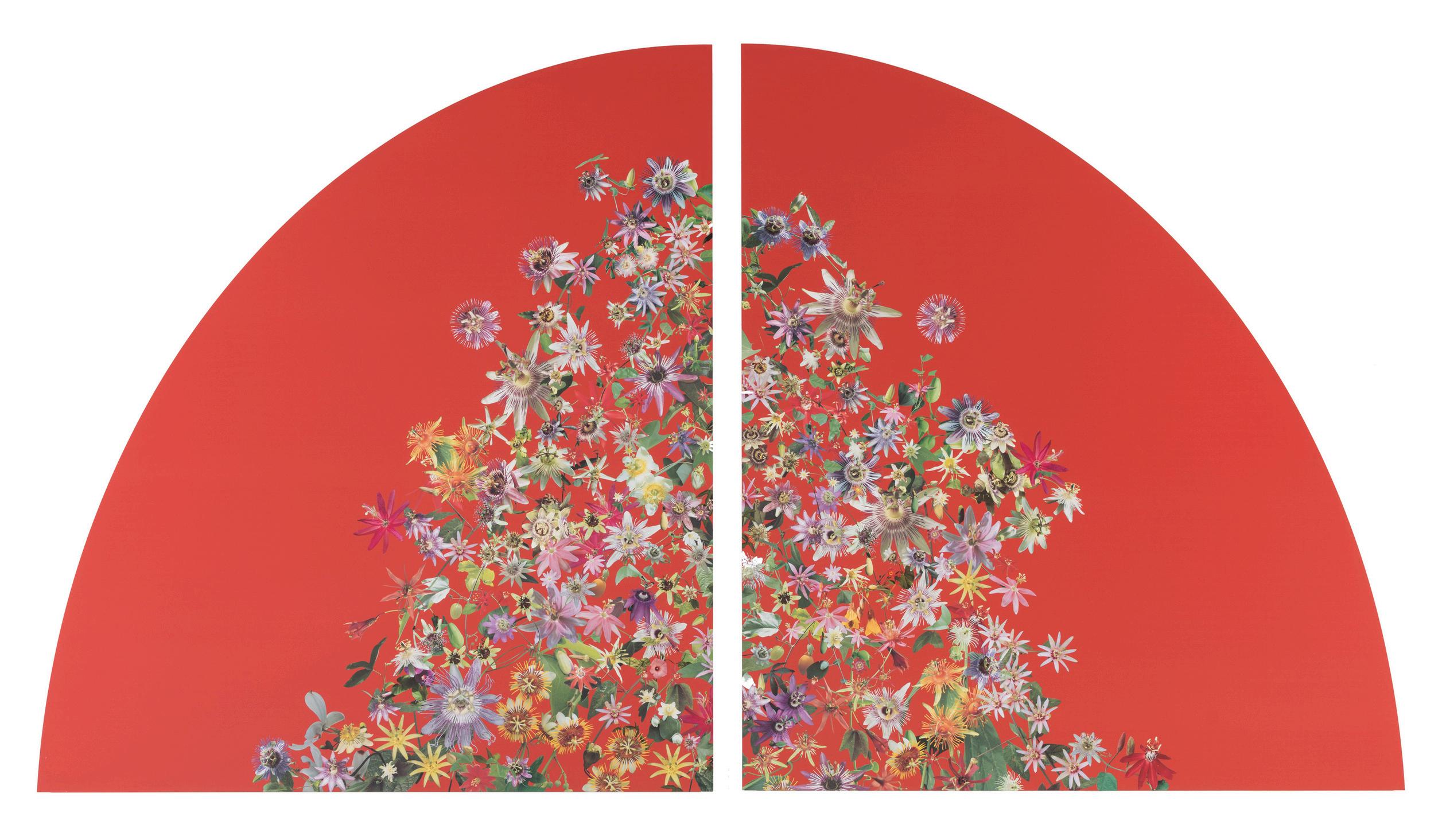
Window to the (Passion Flower), 2024 collage on UV printed aluminum 54 x 98 inches
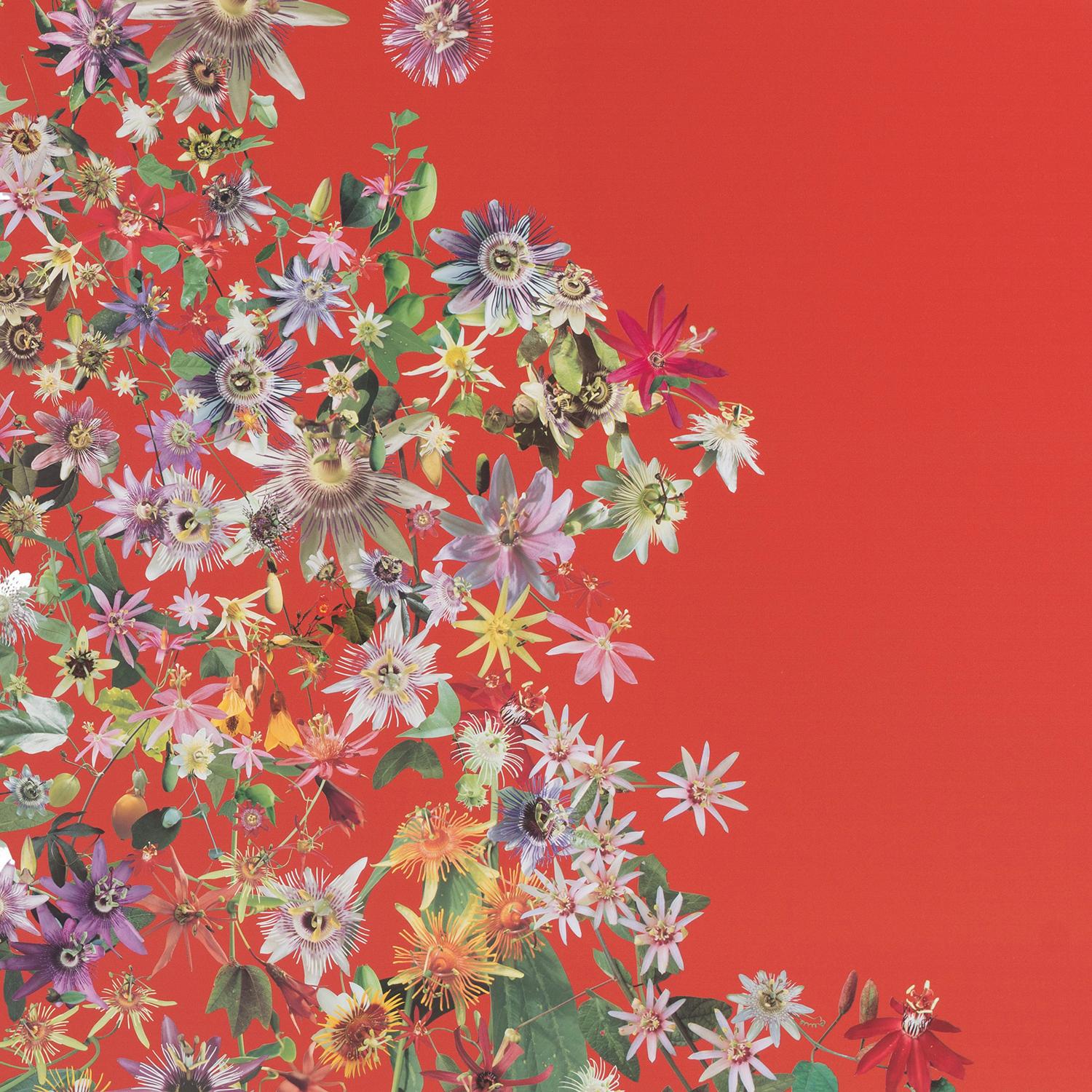
Window to the (Passion Flower) (detail), 2024 collage on UV printed aluminum 54 x 98 inches
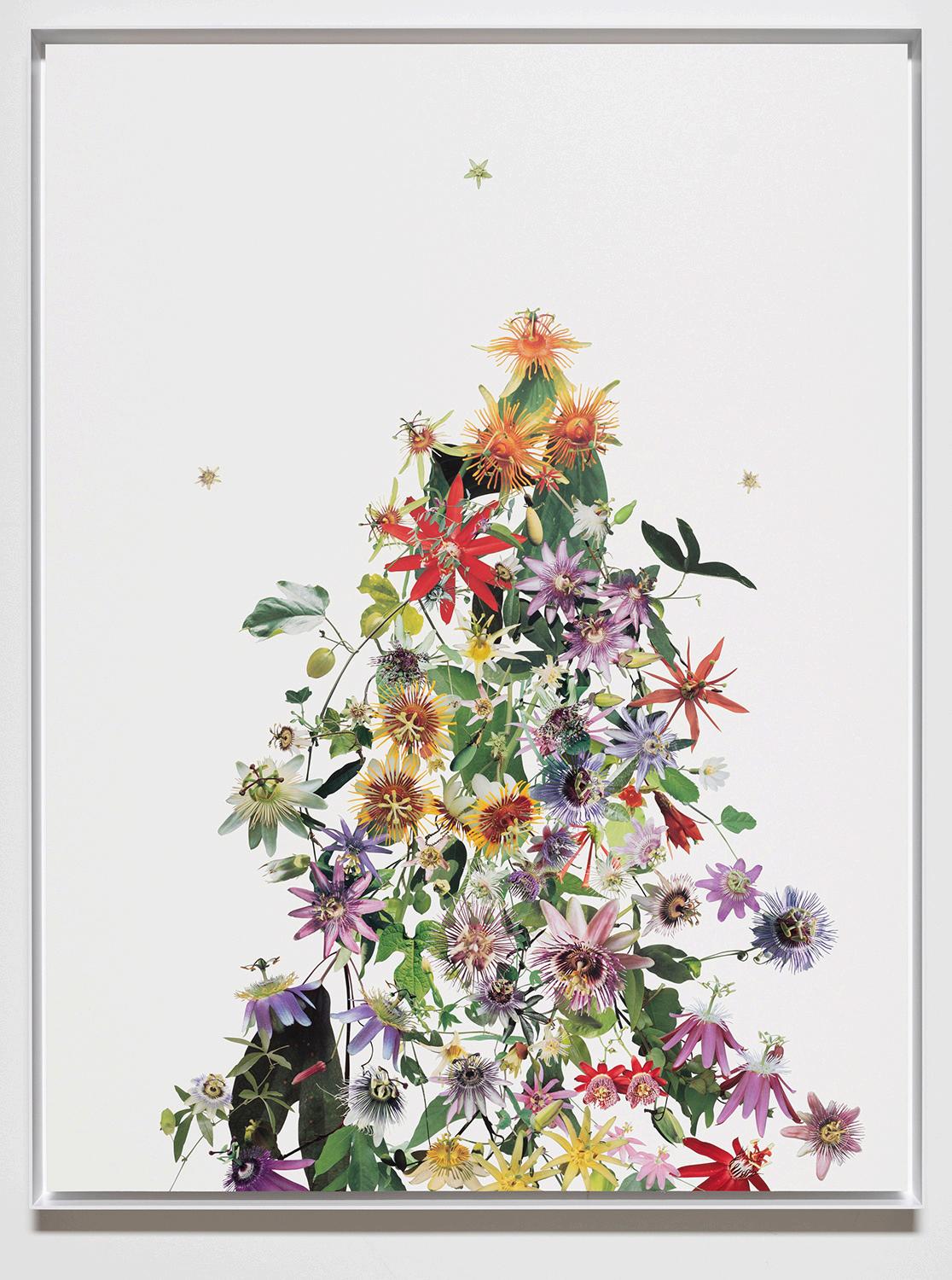
Passion Flower (Slumber), 2023 collage on archival matboard
40 x 30 inches
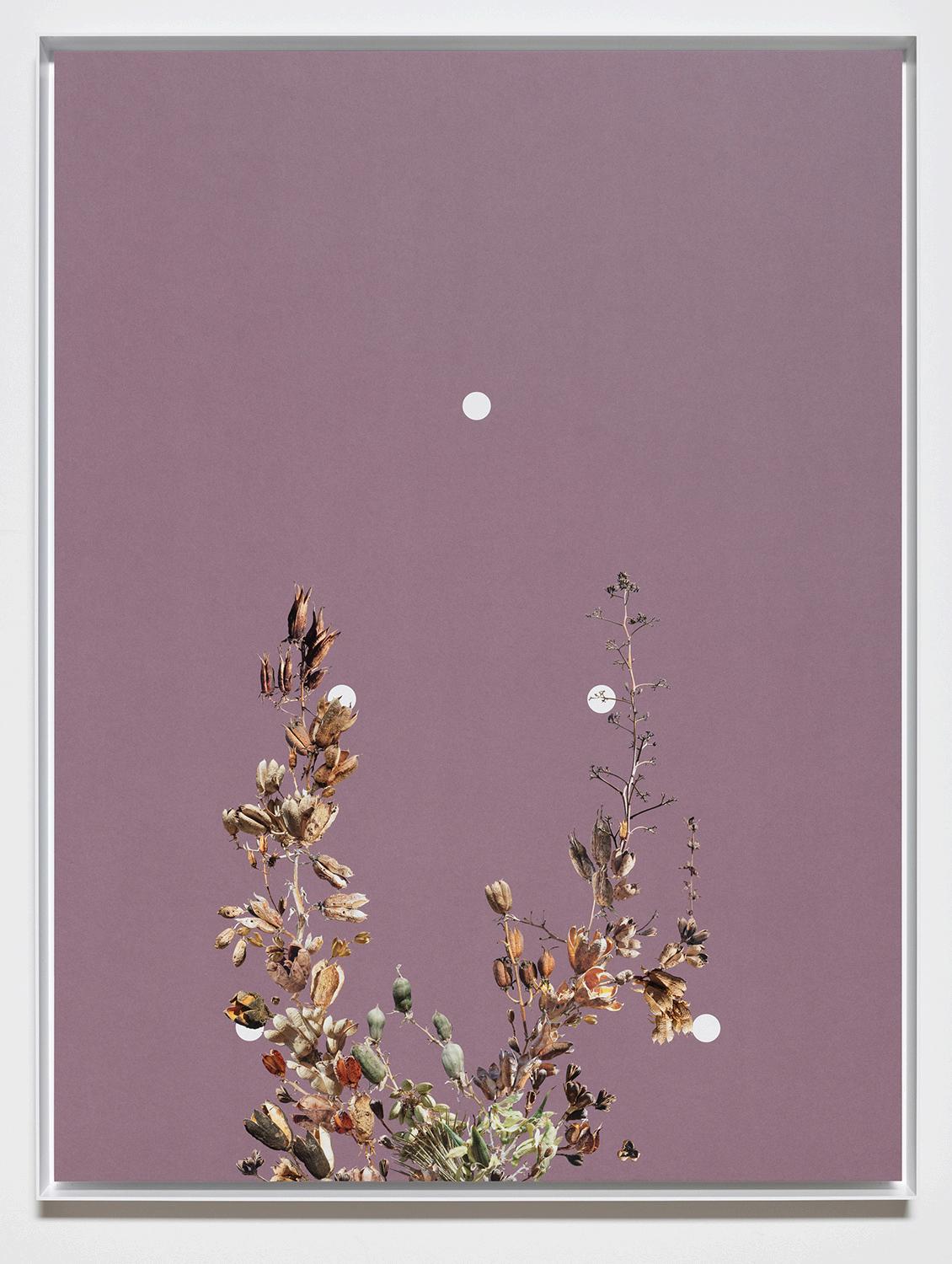
Unfolding (The Mirror), 2023 collage on archival matboard
40 x 30 inches
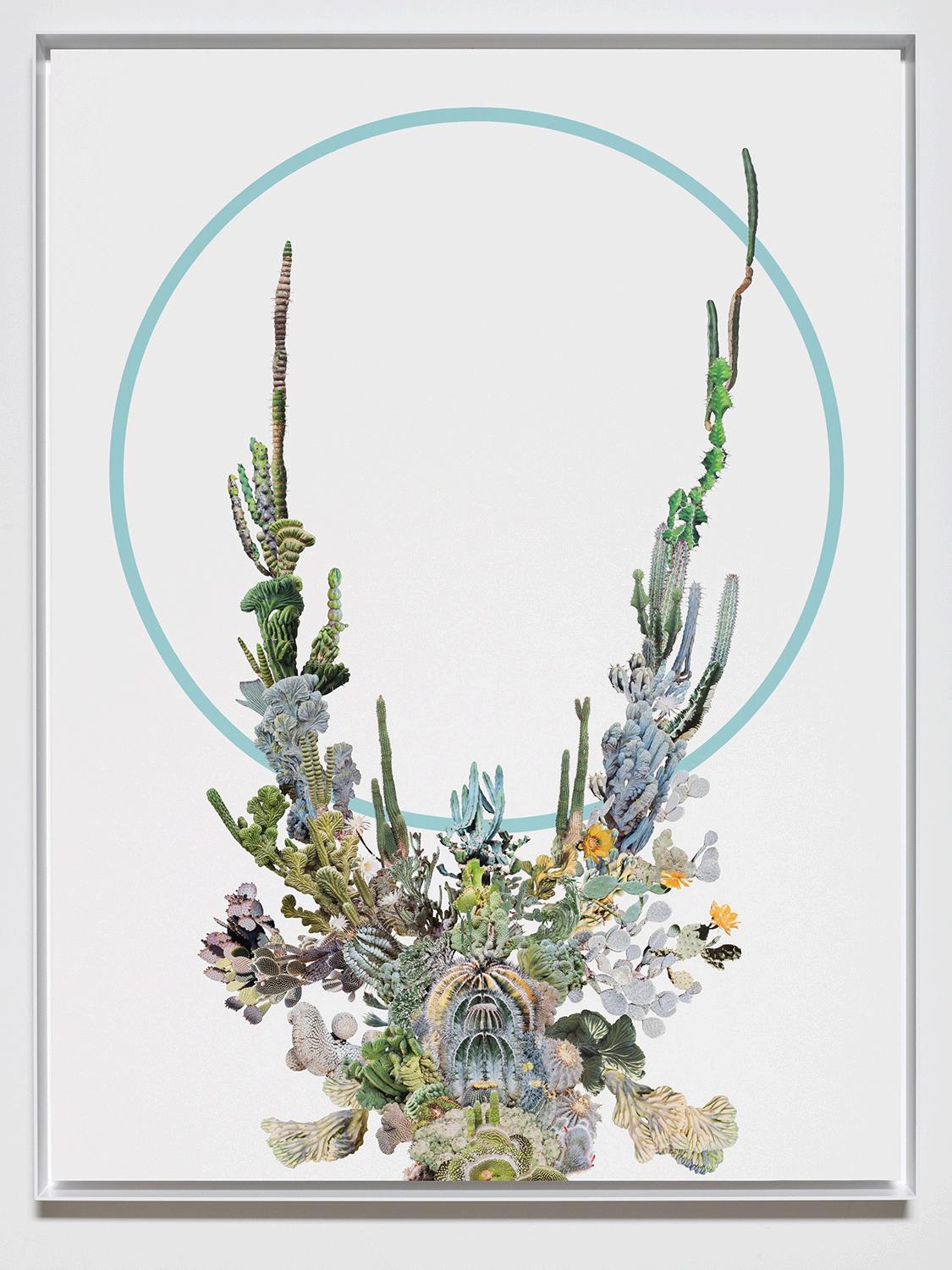
Pods, 2023 collage on archival matboard 40 x 30 inches
Open
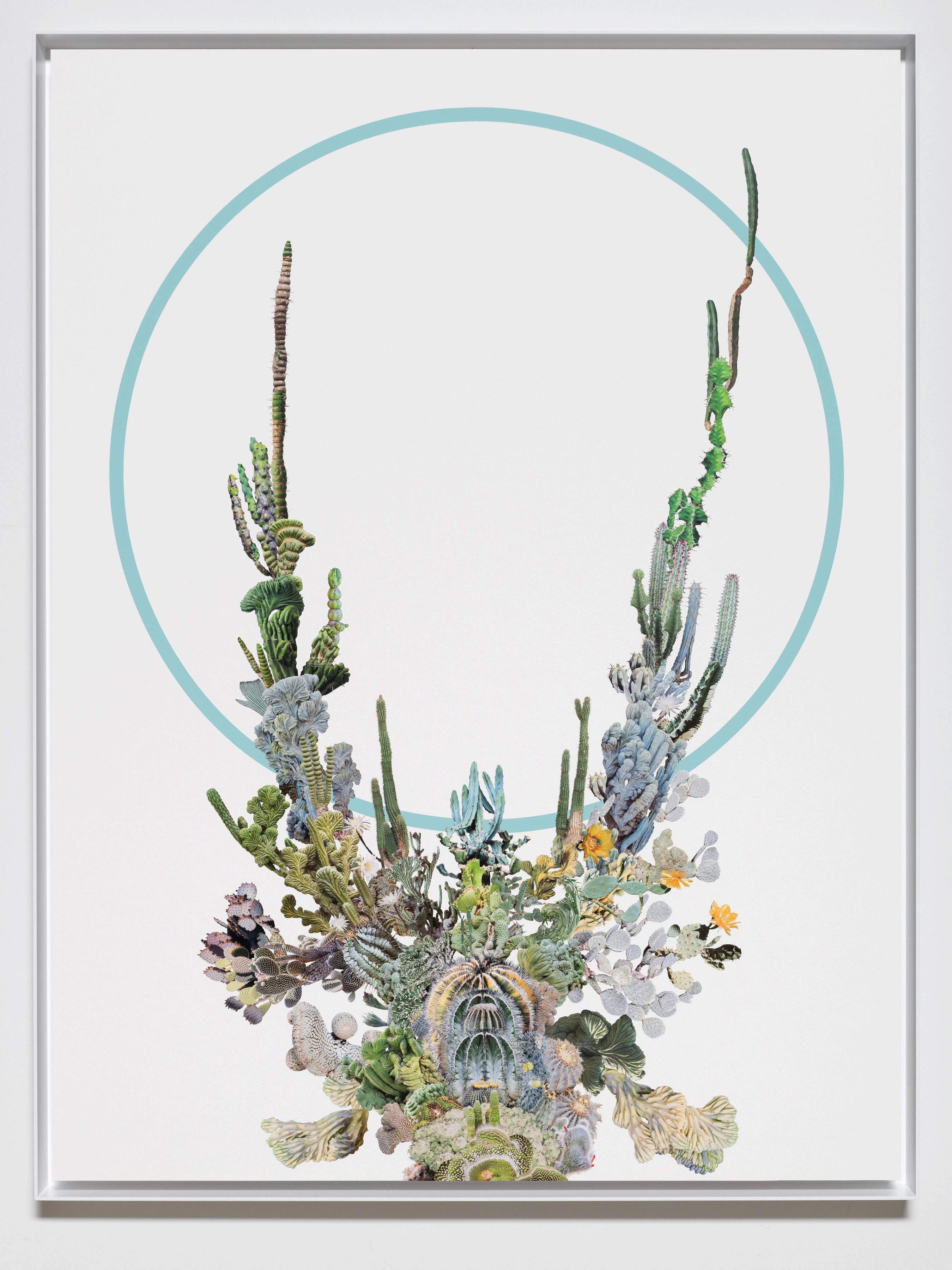
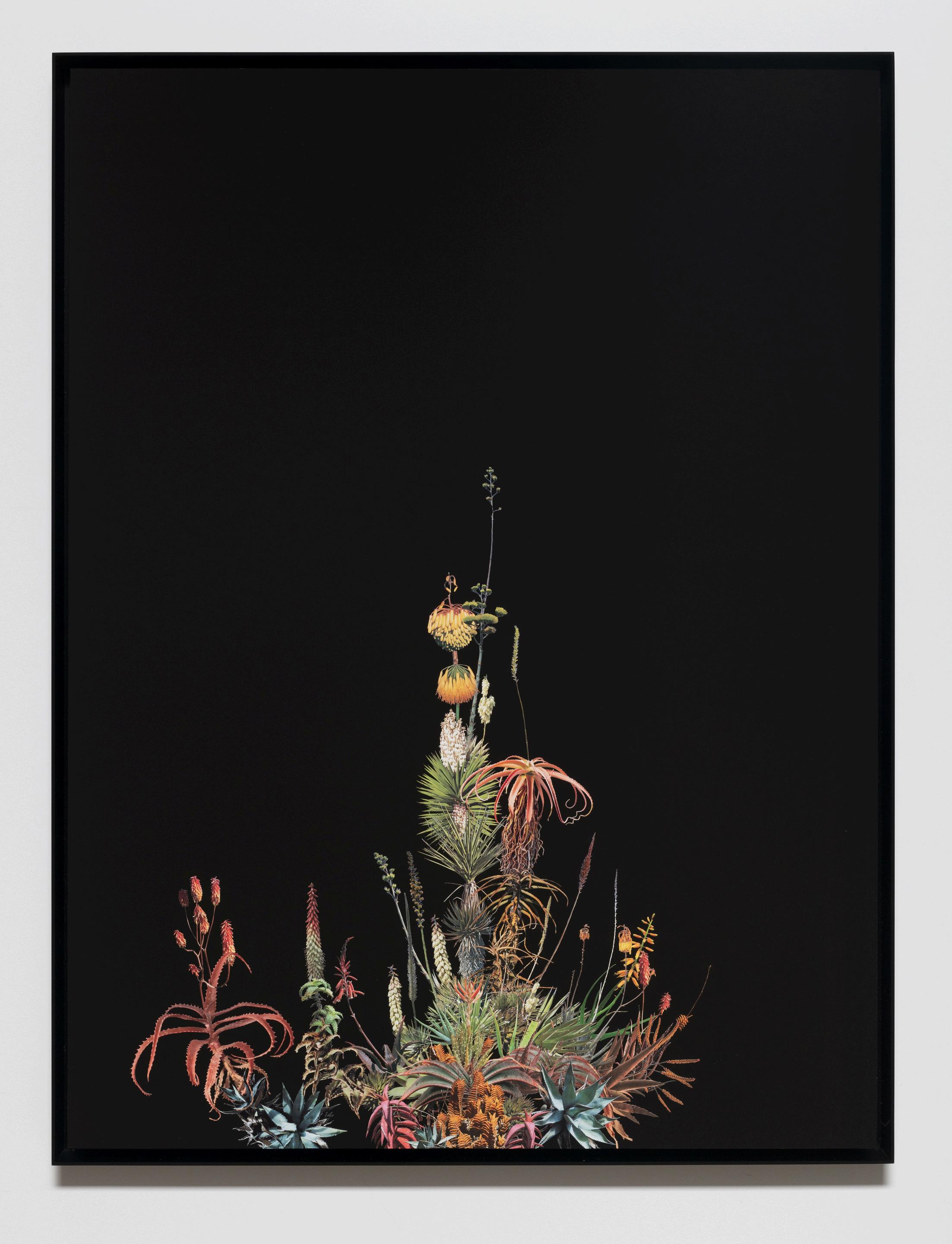
Agave Agave, 2023
collage on archival matboard
40 x 30 inches

Spine (Meditations), 2023 collage on archival matboard
40 x 30 inches

Altar (Golden), 2024 collage on archival matboard
40 x 30 inches

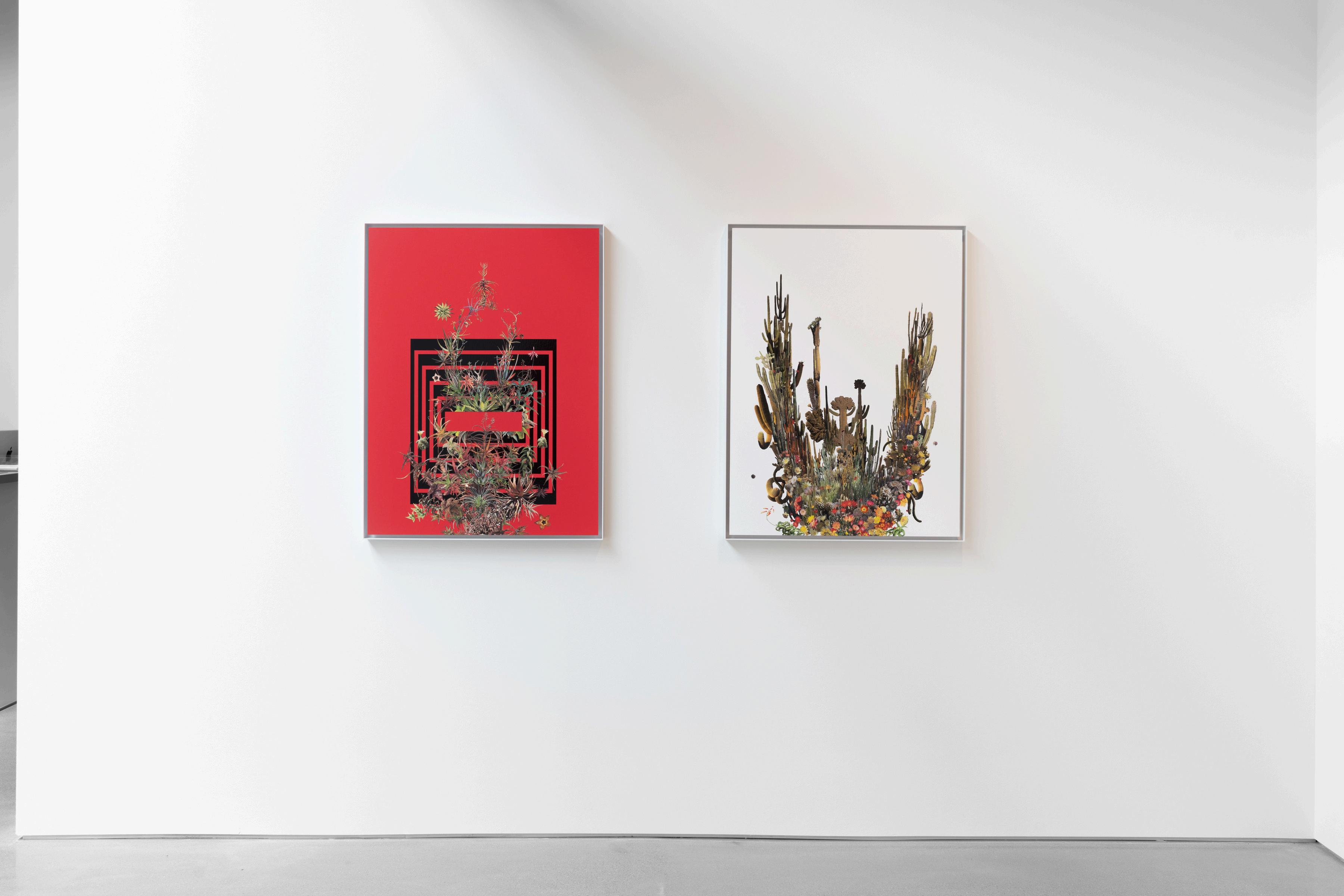
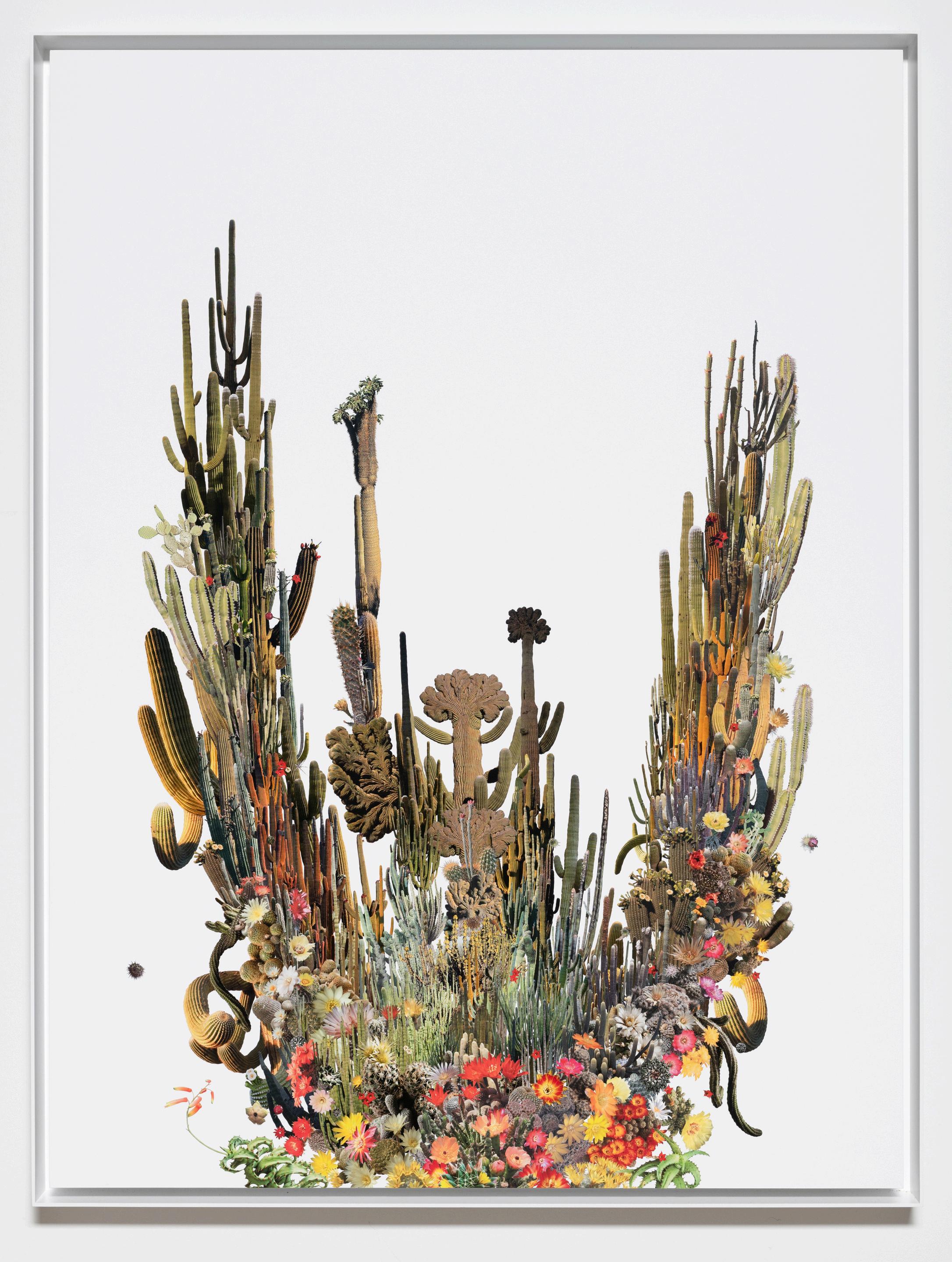
Crested Columnar, 2023 collage on archival matboard 40 x 30 inches

The Aloe and Agave, 2024 collage on archival matboard
40 x 30 inches



40 x 30 inches
The Flower, The Cactus, The Vortex, 2024 collage on archival matboard
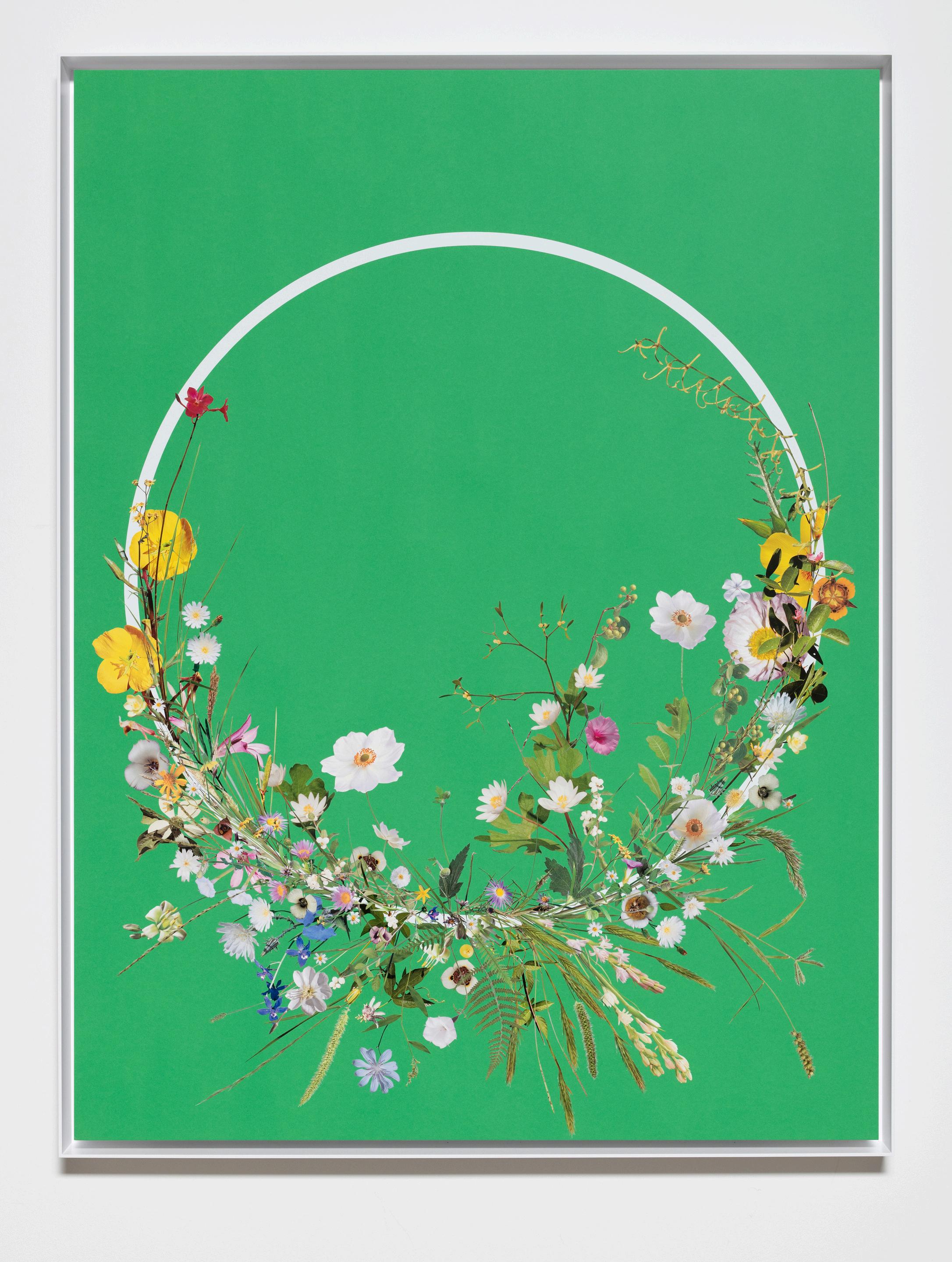
After (Always Remain), 2024 collage on archival matboard
40 x 30 inches

The Drape (Gone in a Day), 2024 collage on archival matboard
40 x 30 inches

In and Out of the Garden (Summer), 2024
collage on UV printed aluminum panel 114 x 36 inches
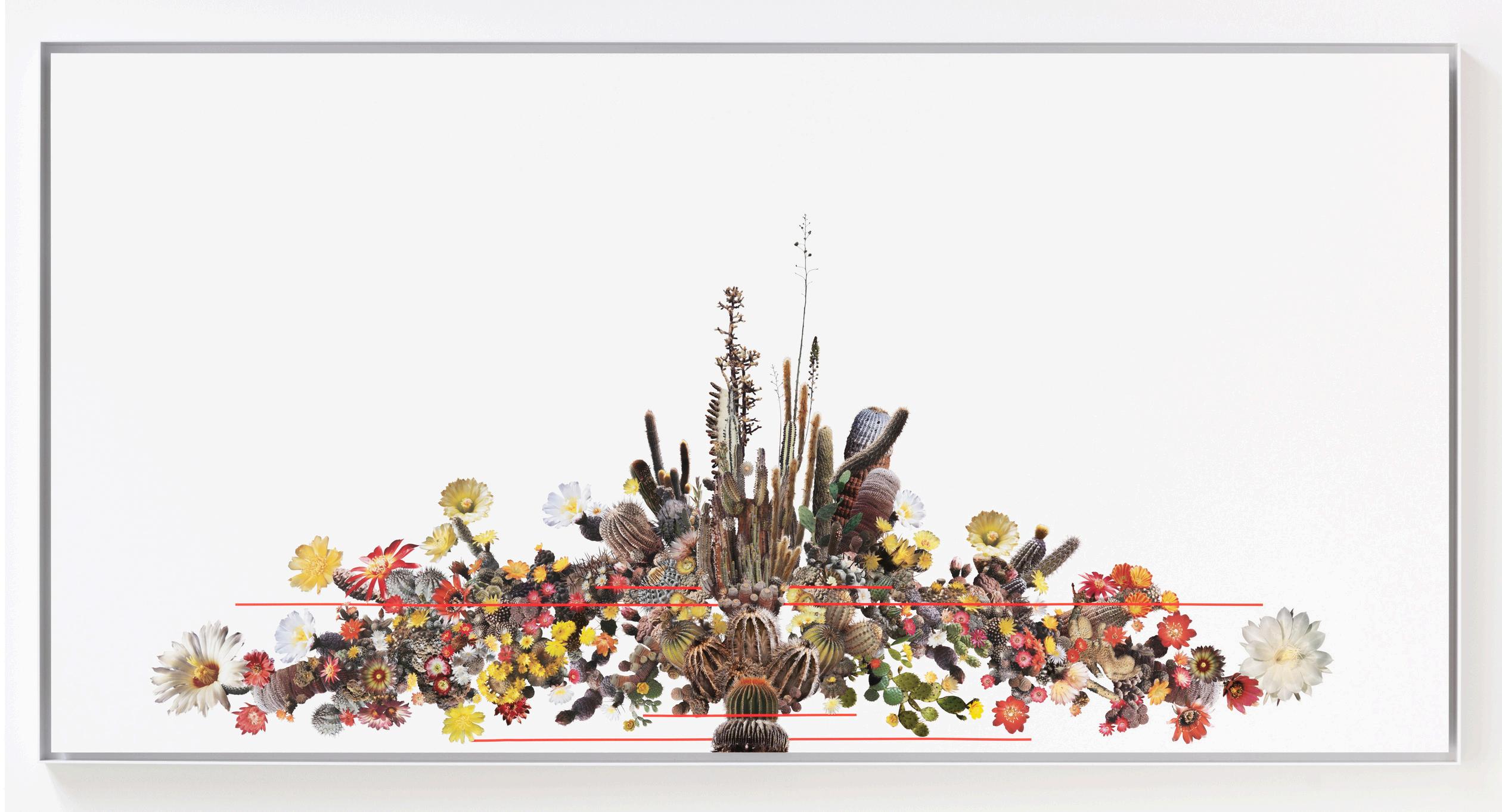
Reckoner, 2024 collage on archival matboard
37.25 x 73.25 inches
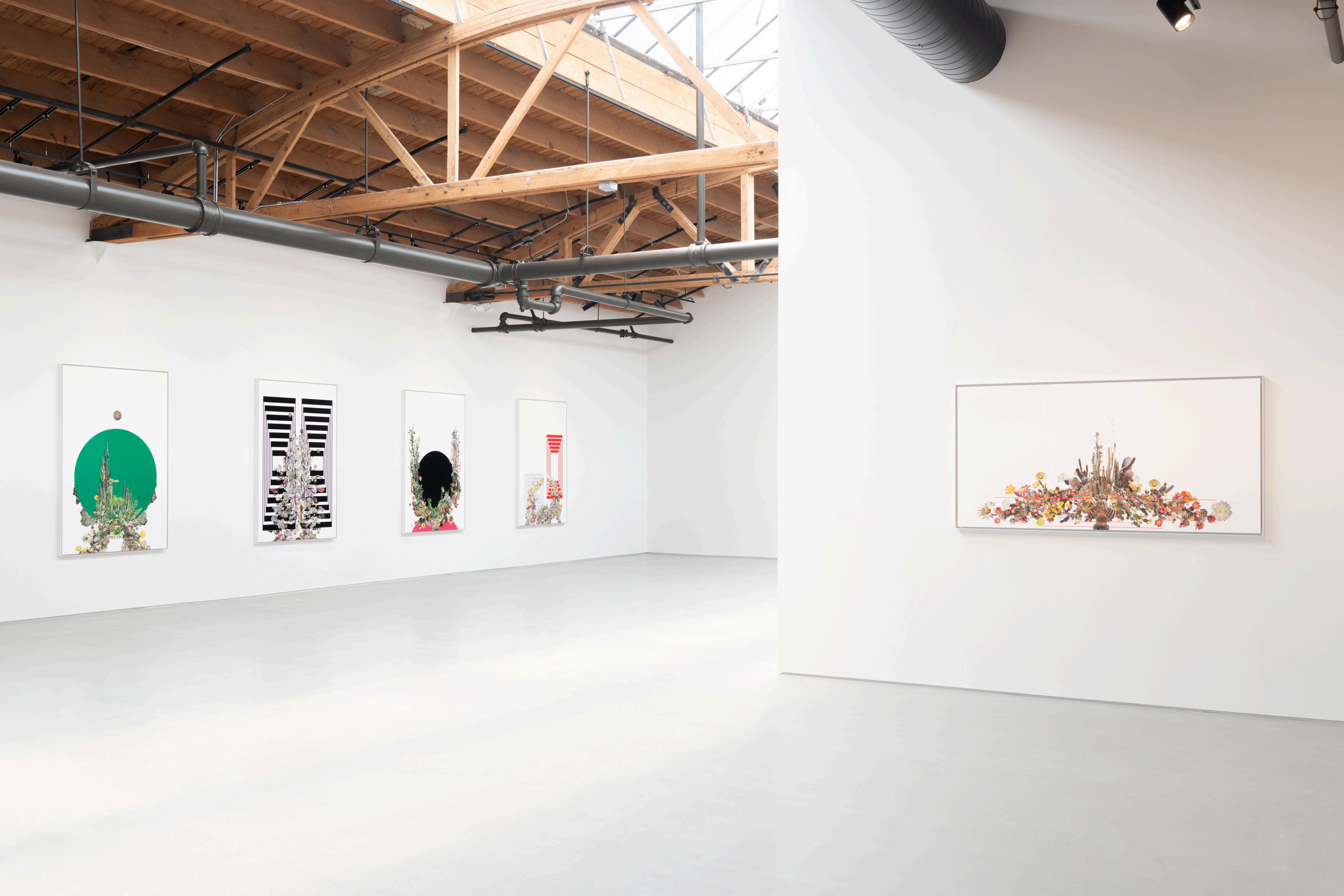

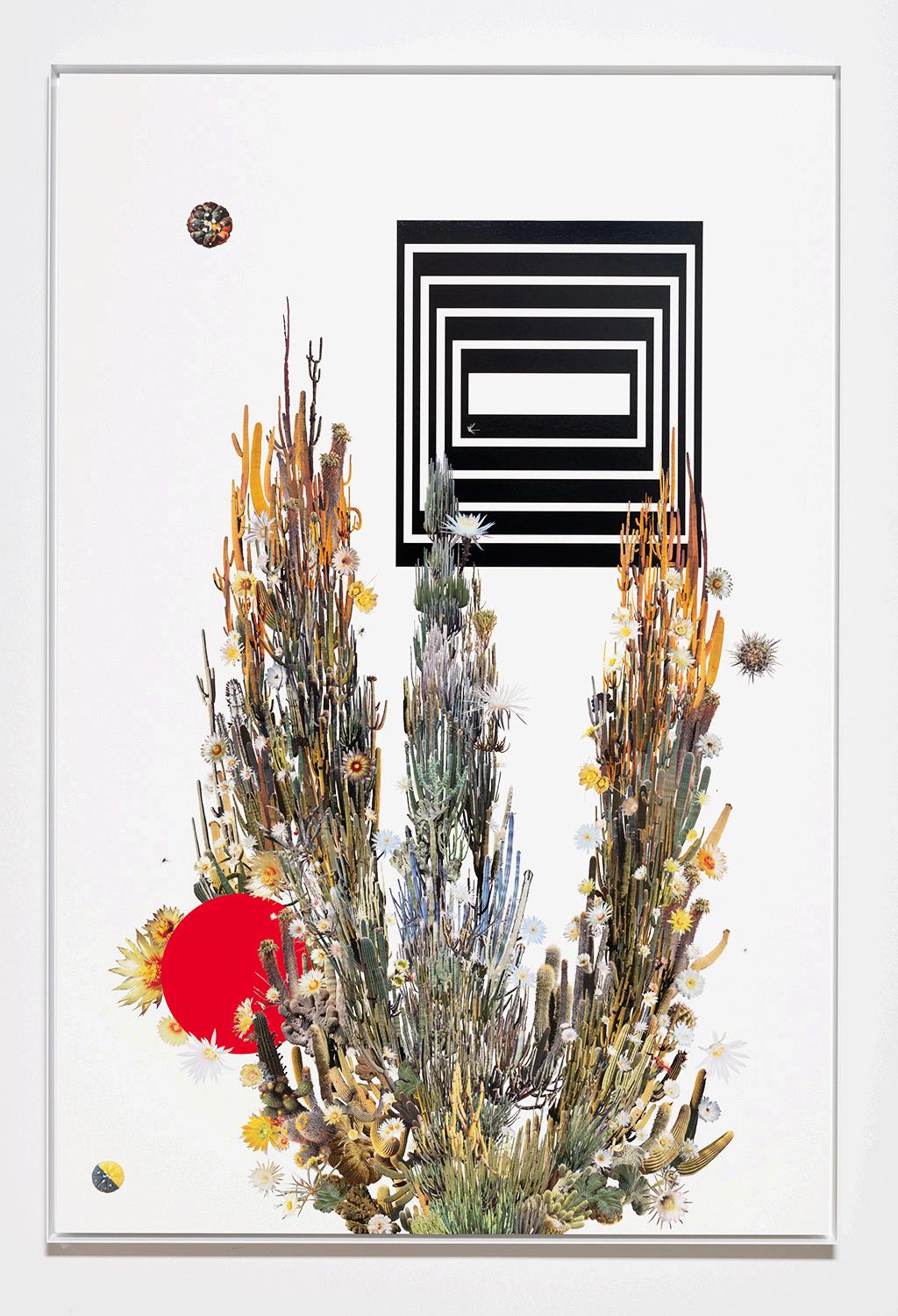
Sunsetter, 2024 collage and vinyl on archival matboard
72 x 48 inches
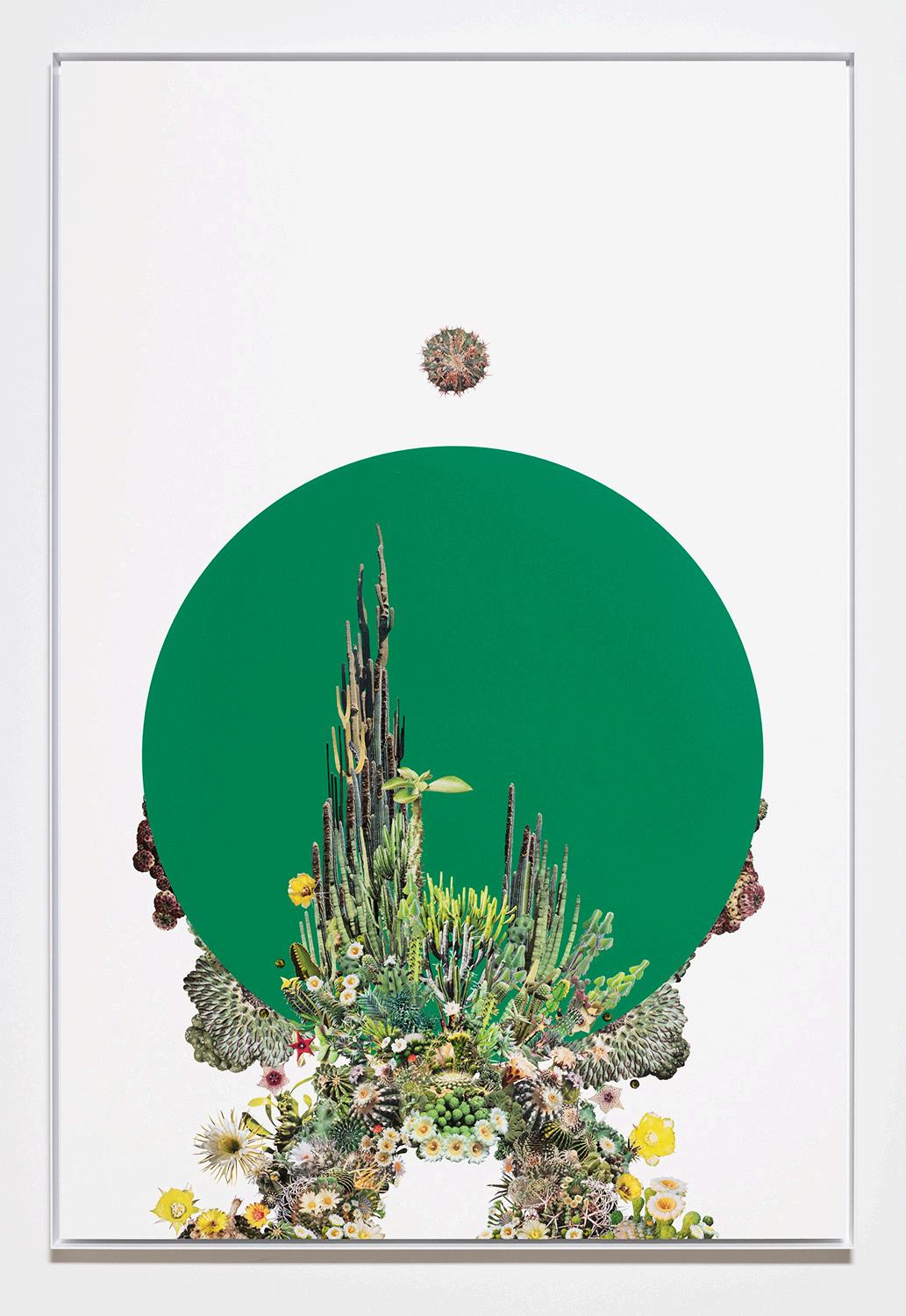
Walk Into This (Kneeler), 2024 collage and vinyl on archival matboard
72 x 48 inches

Folding / Unfolding (Time), 2024 collage and vinyl on archival matboard
72 x 48 inches
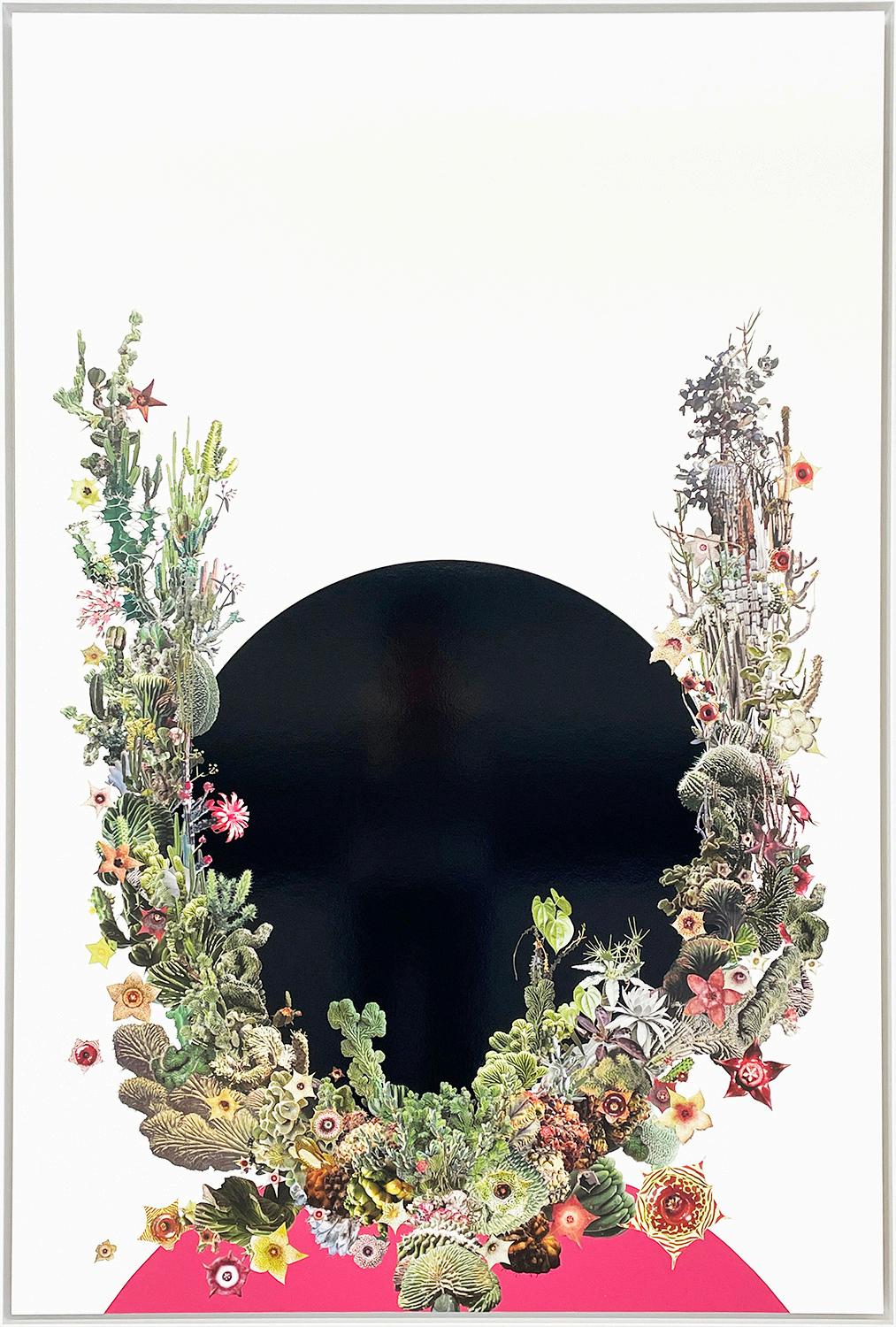
Void Bridge, 2024 collage and vinyl on archival matboard
72 x 48 inches
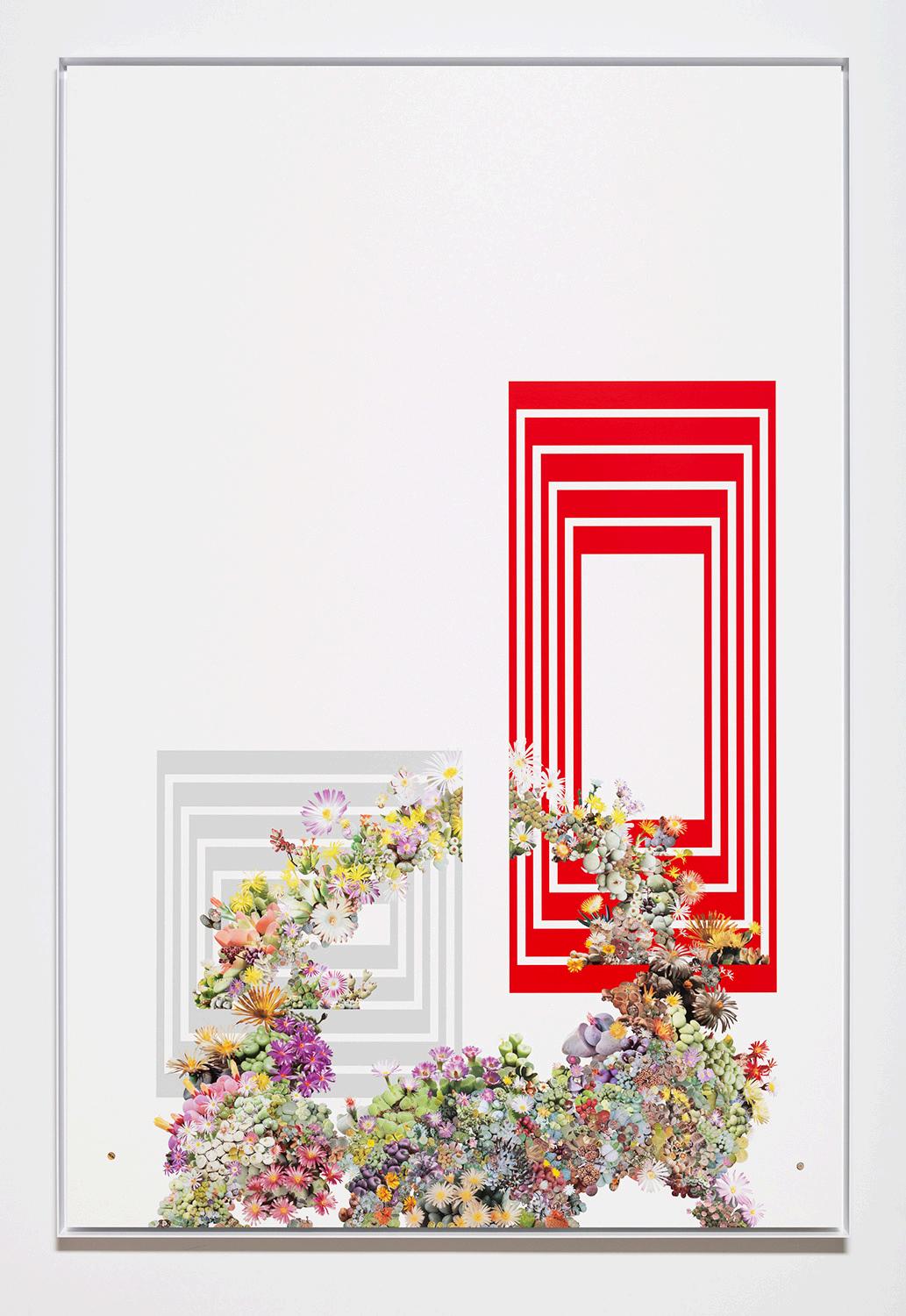
Cono (Theology), 2024
collage and vinyl on archival matboard
72 x 48 inches
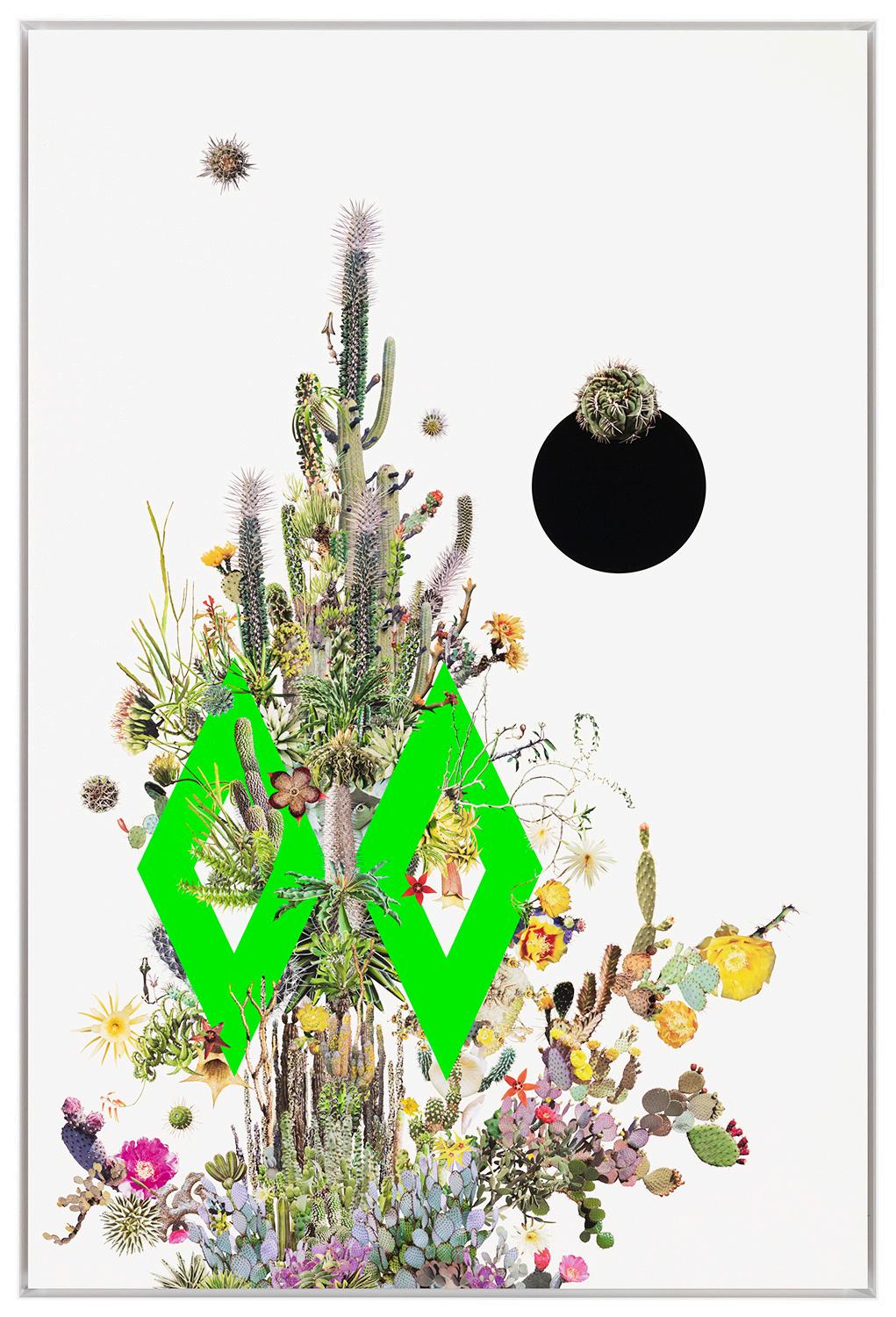
Alluaudia Stacks, 2023 collage and vinyl on archival matboard
72 x 48 inches
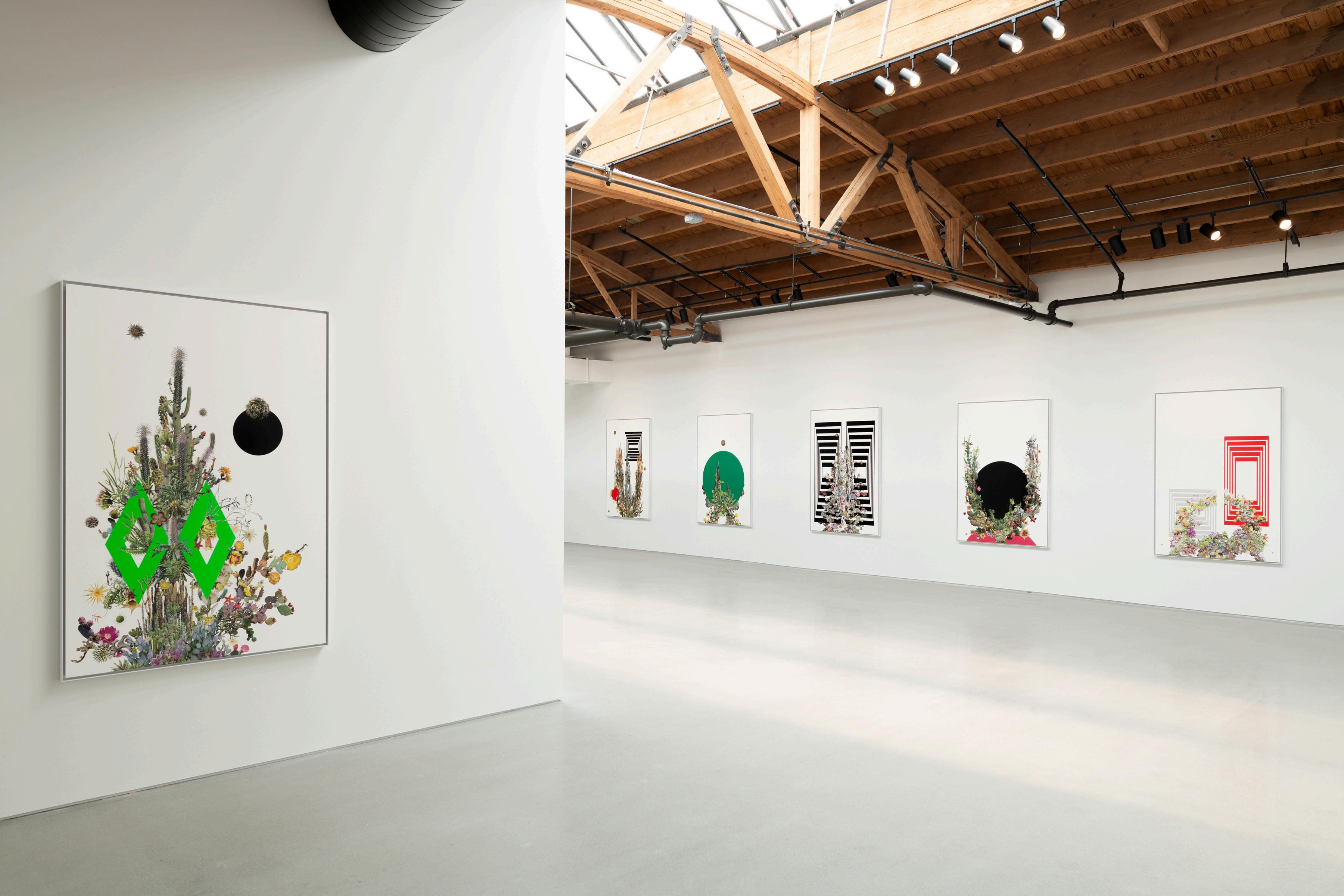


In & Out of the Garden (Spring), 2023 collage on archival matboard
37.25 x 73.25 inches

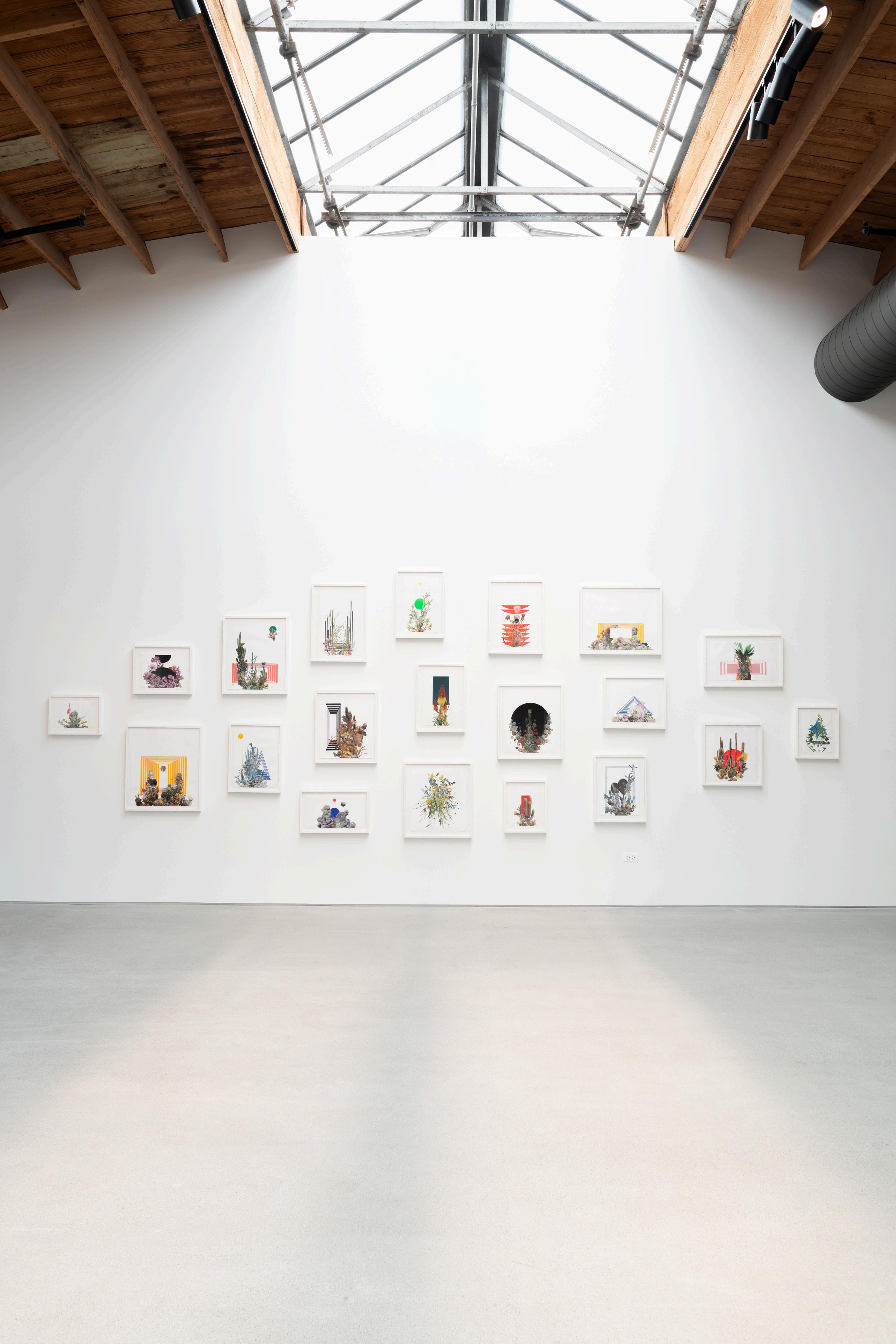
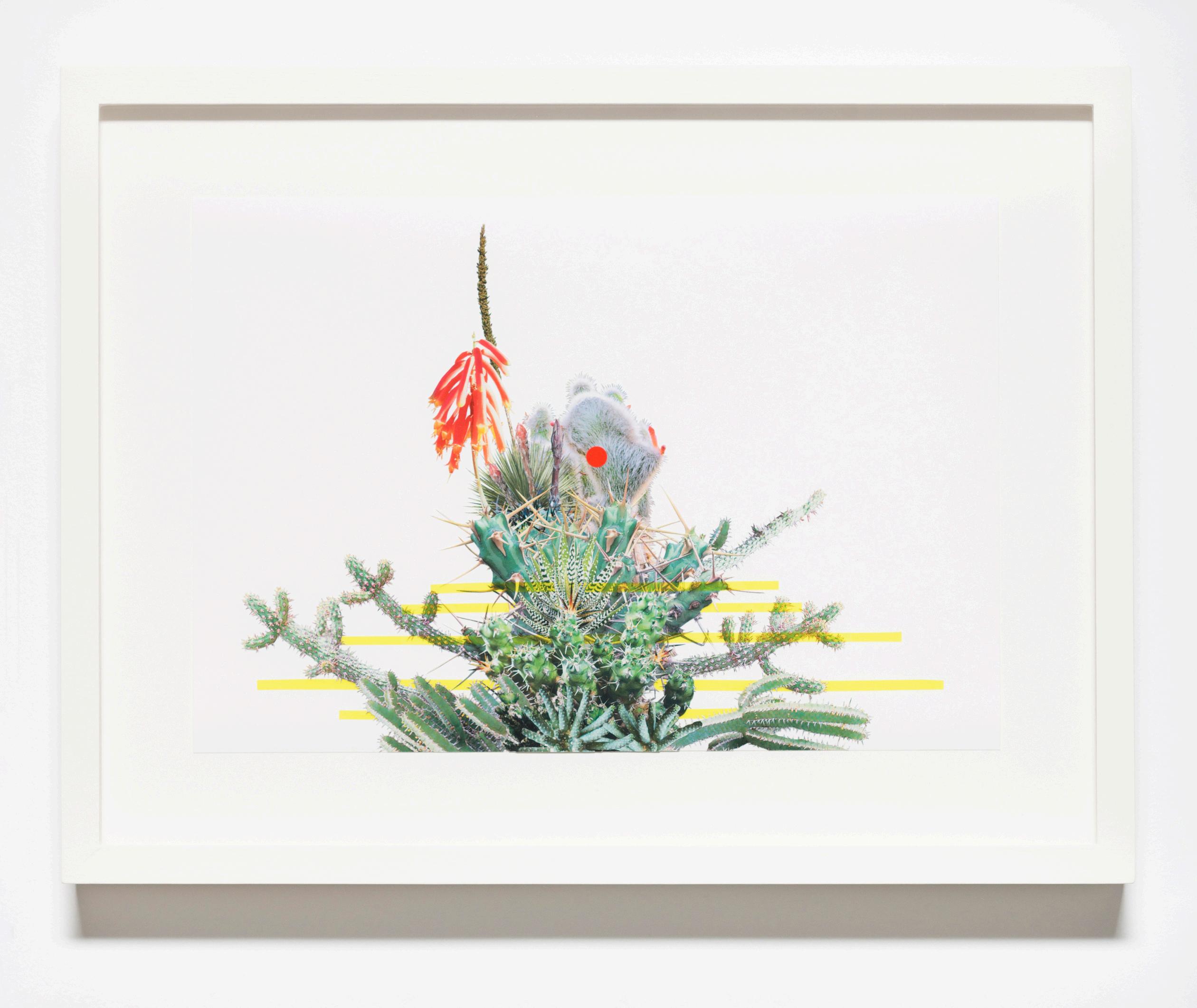
Yellow Drifts (Voidground), 2024
collage and vinyl on archival matboard 16 x 12 inches
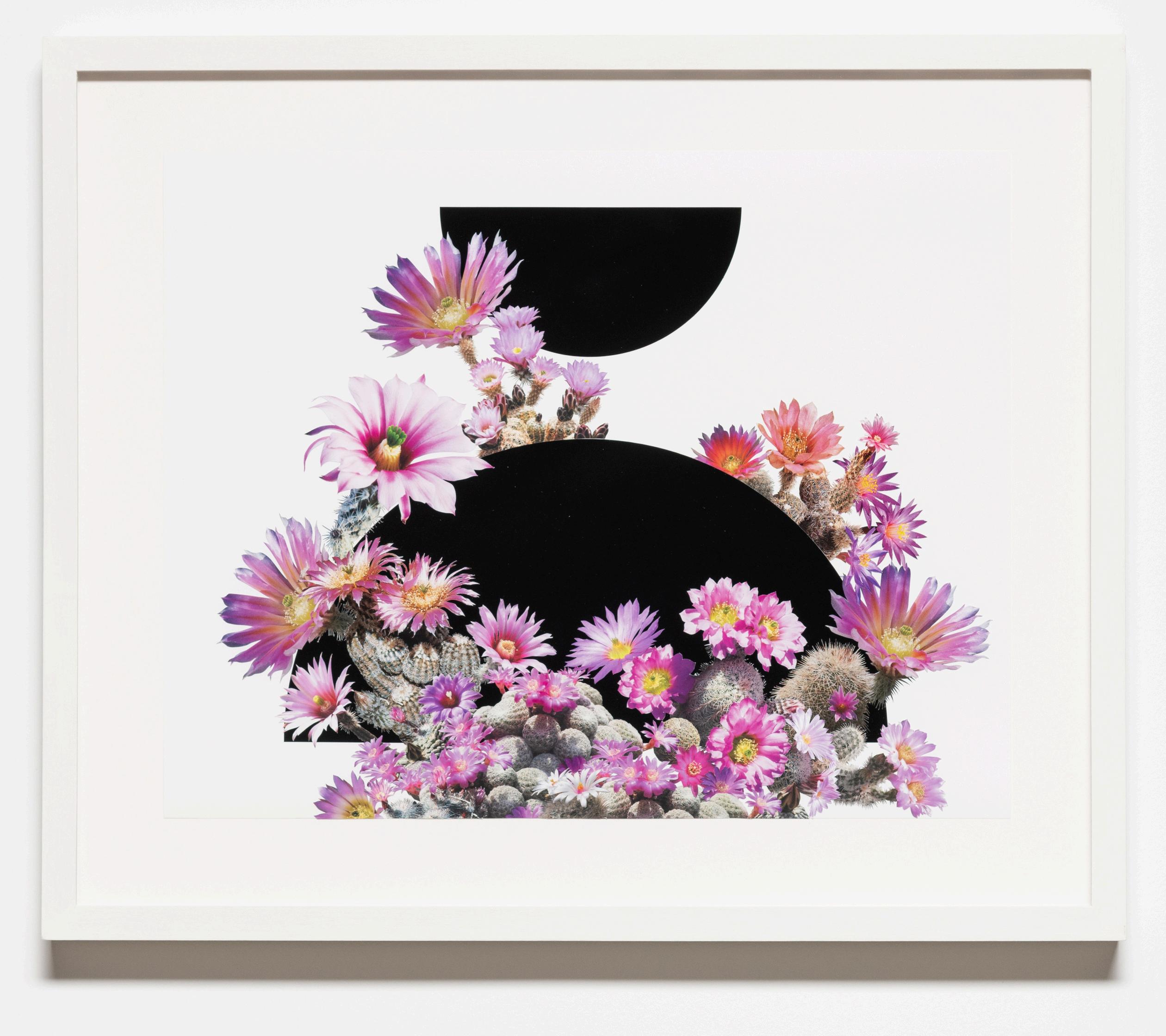
Pink Flowers (Voidground), 2024 collage and vinyl on archival matboard 17.75 x 15 inches
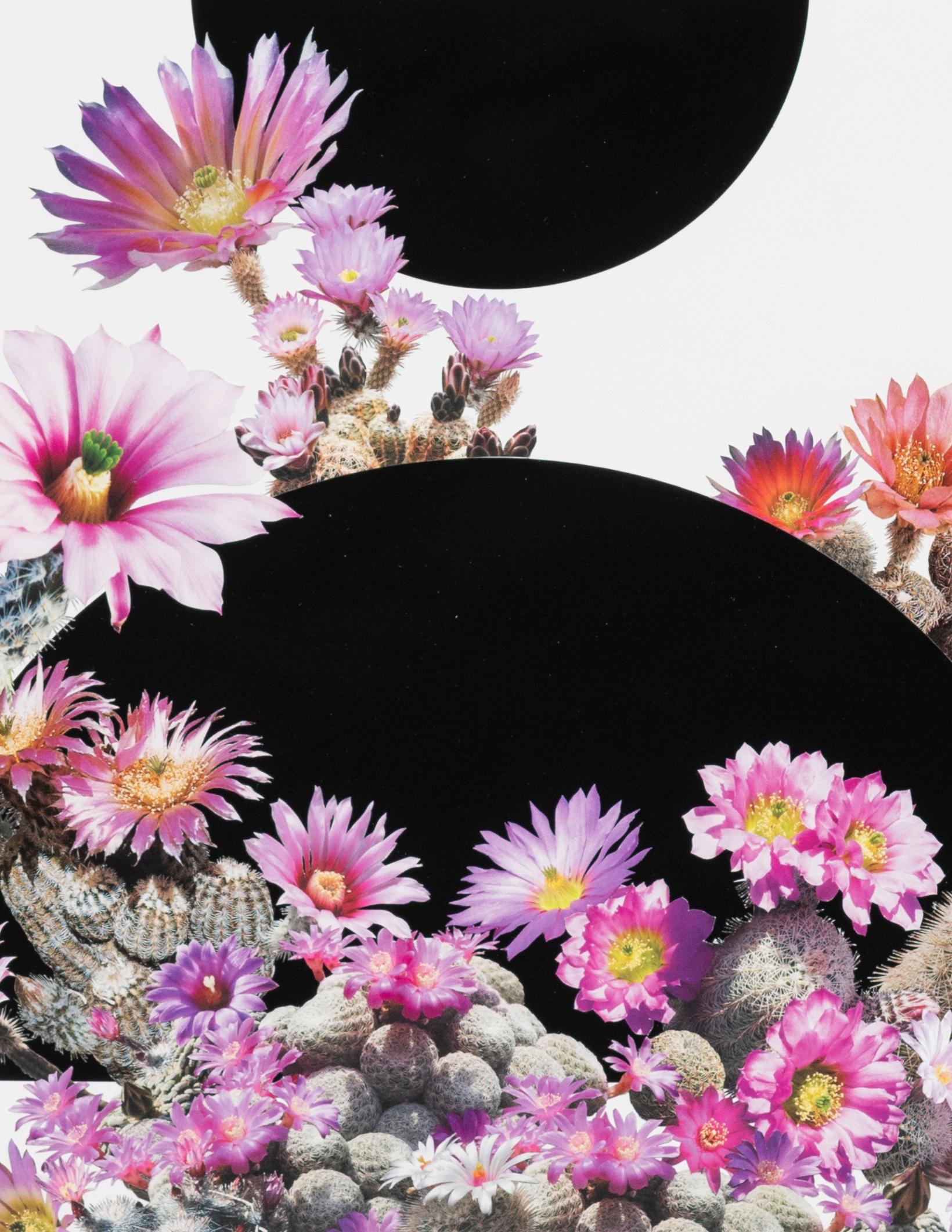
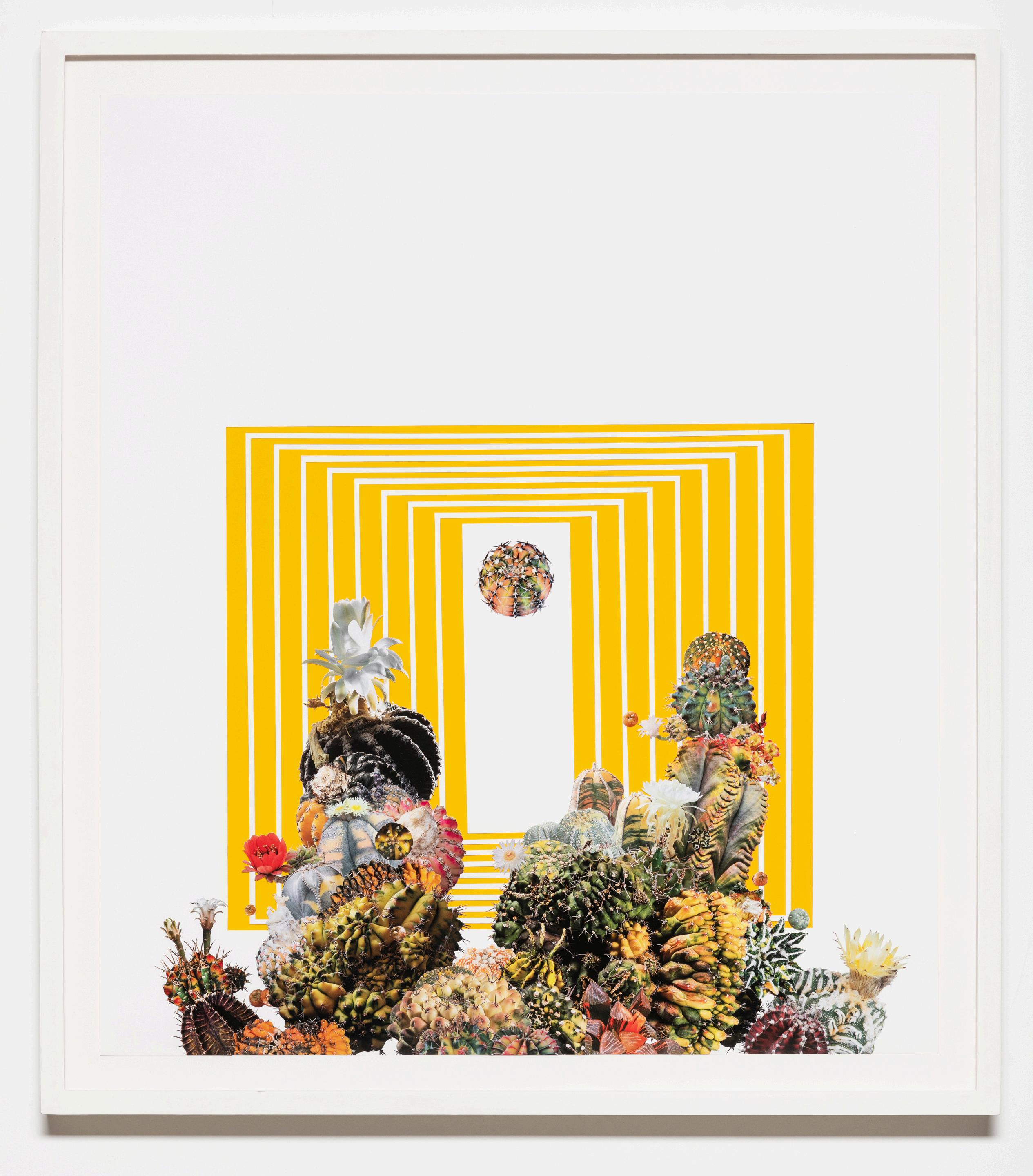
Stepped Variegation (Voidground), 2024
collage and vinyl on archival matboard
22.75 x 25.75 inches

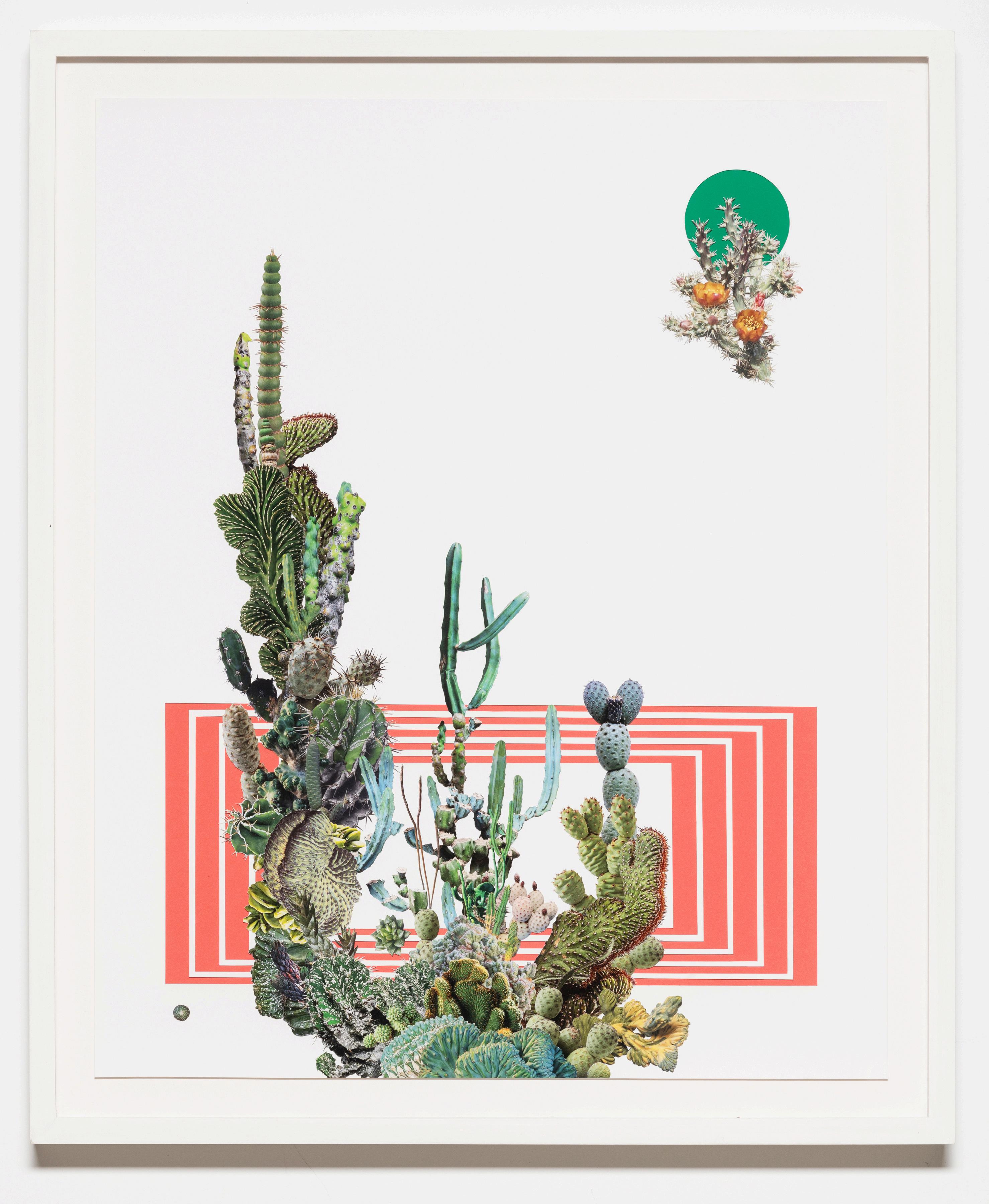
Stepped Graft (Voidground), 2024 collage and vinyl on archival matboard 19.75 x 24 inches

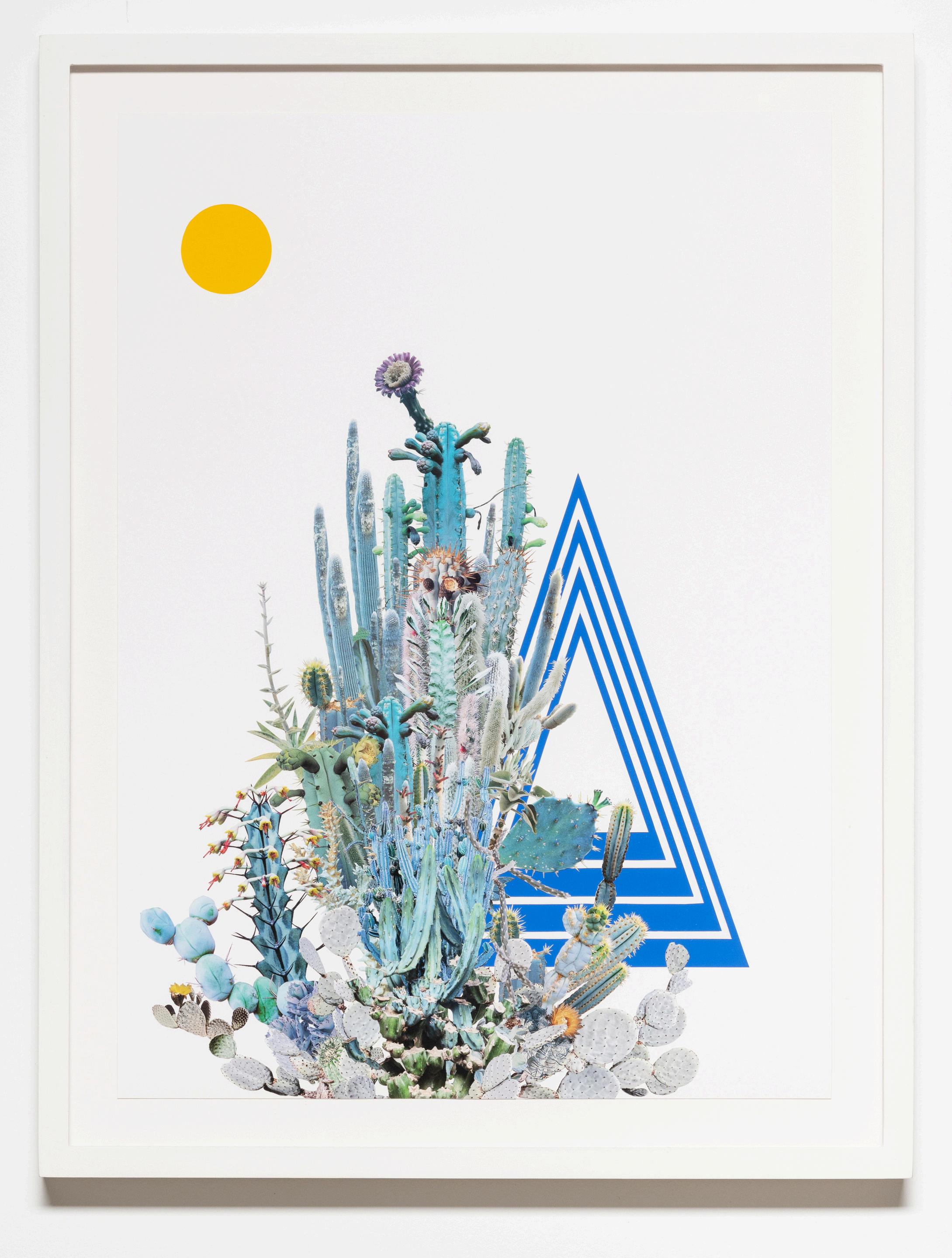
Stepped Triangle (Voidground), 2024 collage and vinyl on archival matboard 16 x 20.75 inches


Stepped Grasses (Voidground), 2024 collage and vinyl on archival matboard 17 x 23.75 inches


Stepped Mass (Voidground), 2024 collage and vinyl on archival matboard 16 x 12 inches

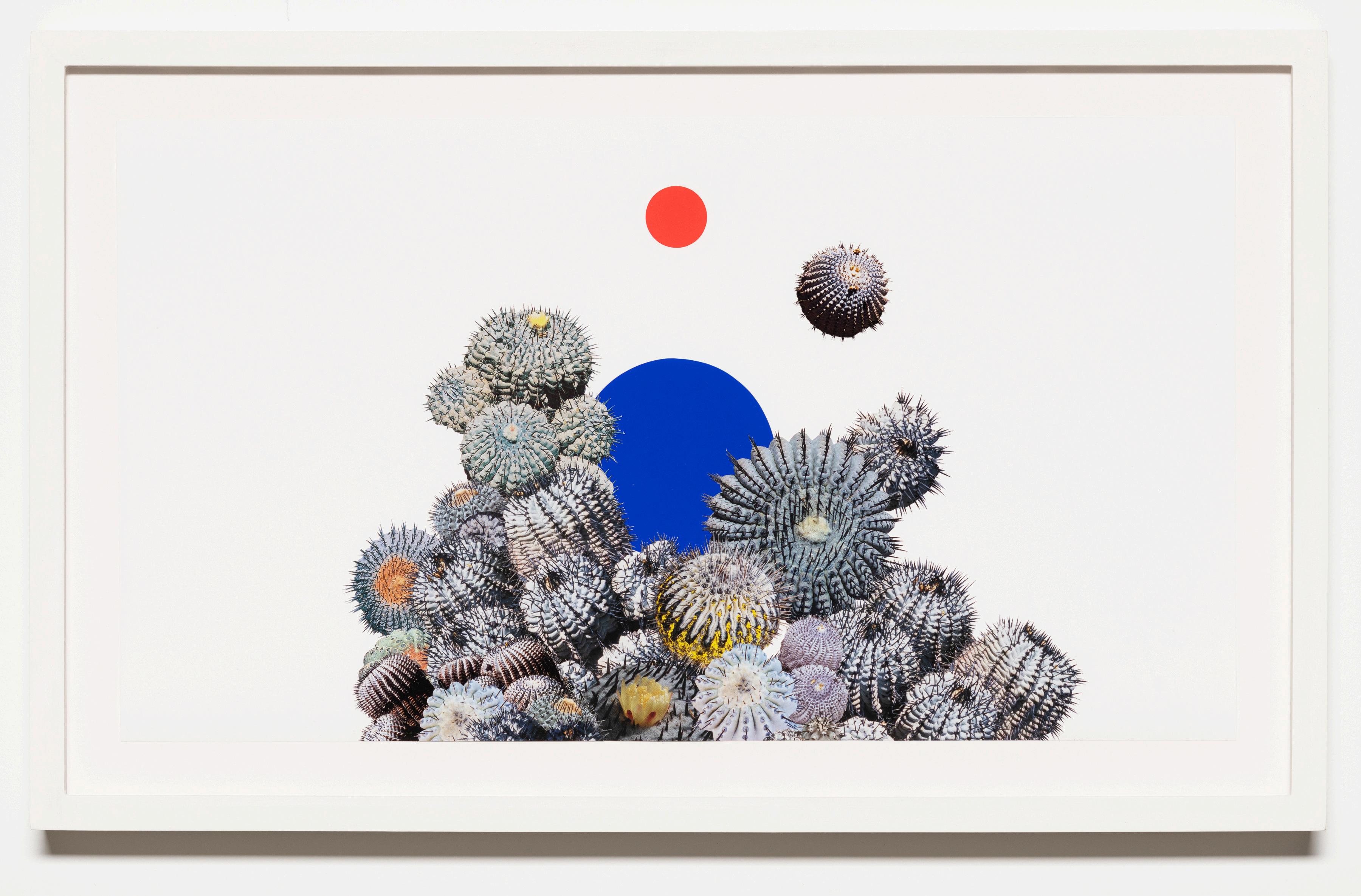
Orange and Blue (Voidground), 2024 collage and vinyl on archival matboard 20.75 x 13 inches

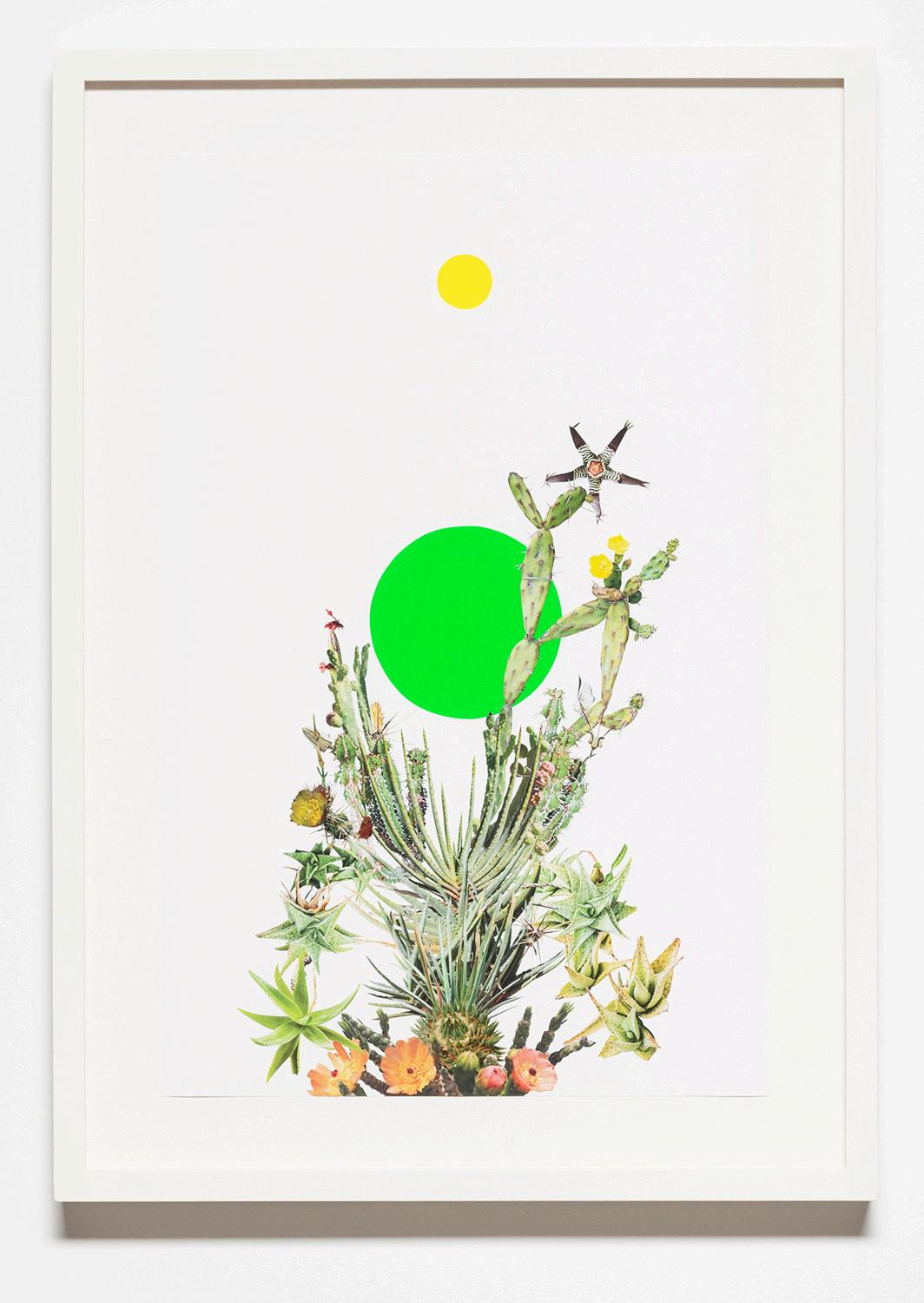
Green & Yellow (Voidground), 2024 collage and vinyl on archival matboard 15 x 21 inches


The Garden (Voidground), 2024 collage and vinyl on archival
14.75 x 20.75 inches
matboard

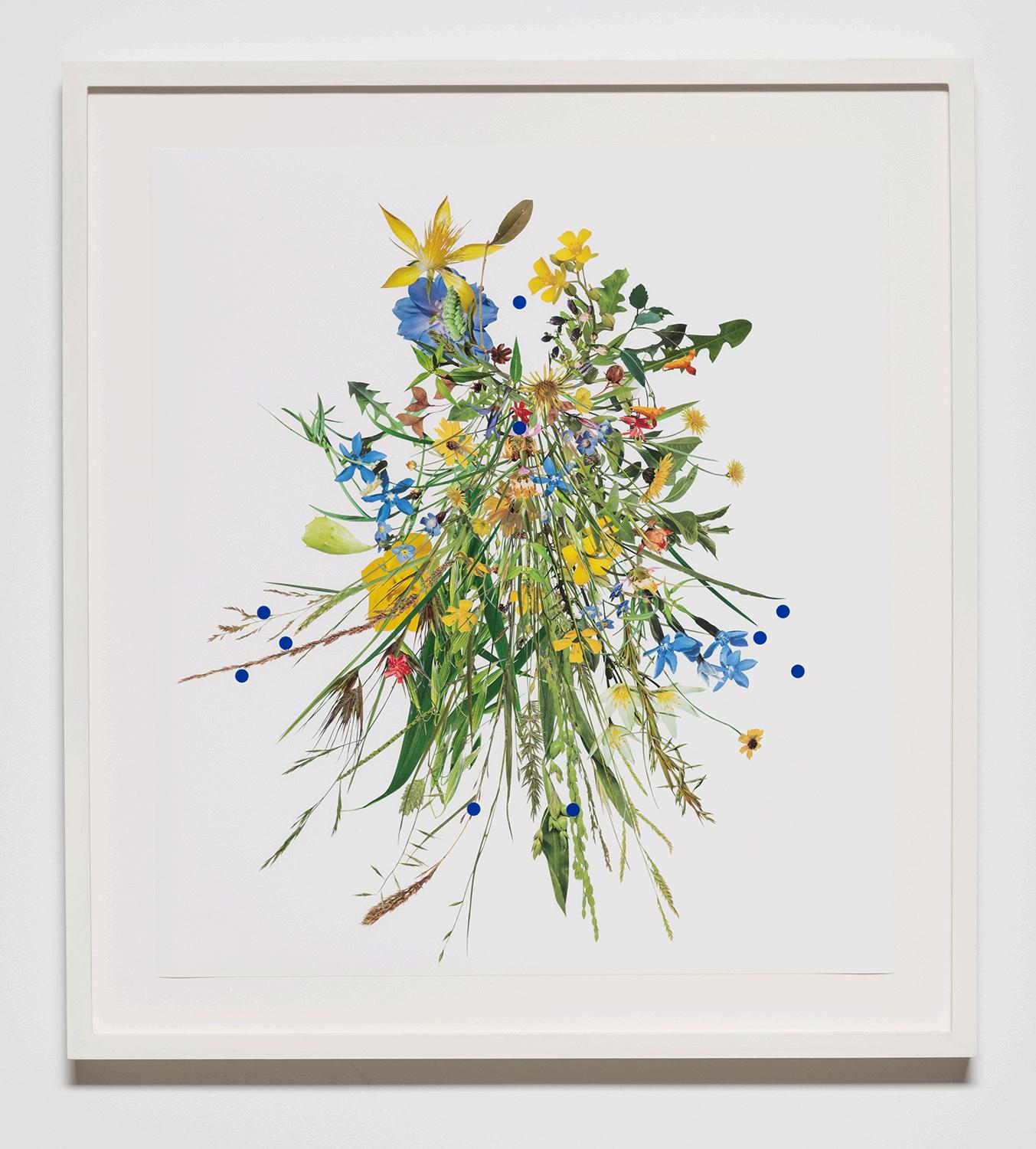
Drape (Points), 2024 collage and vinyl on archival matboard
20.75 x 22.75 inches

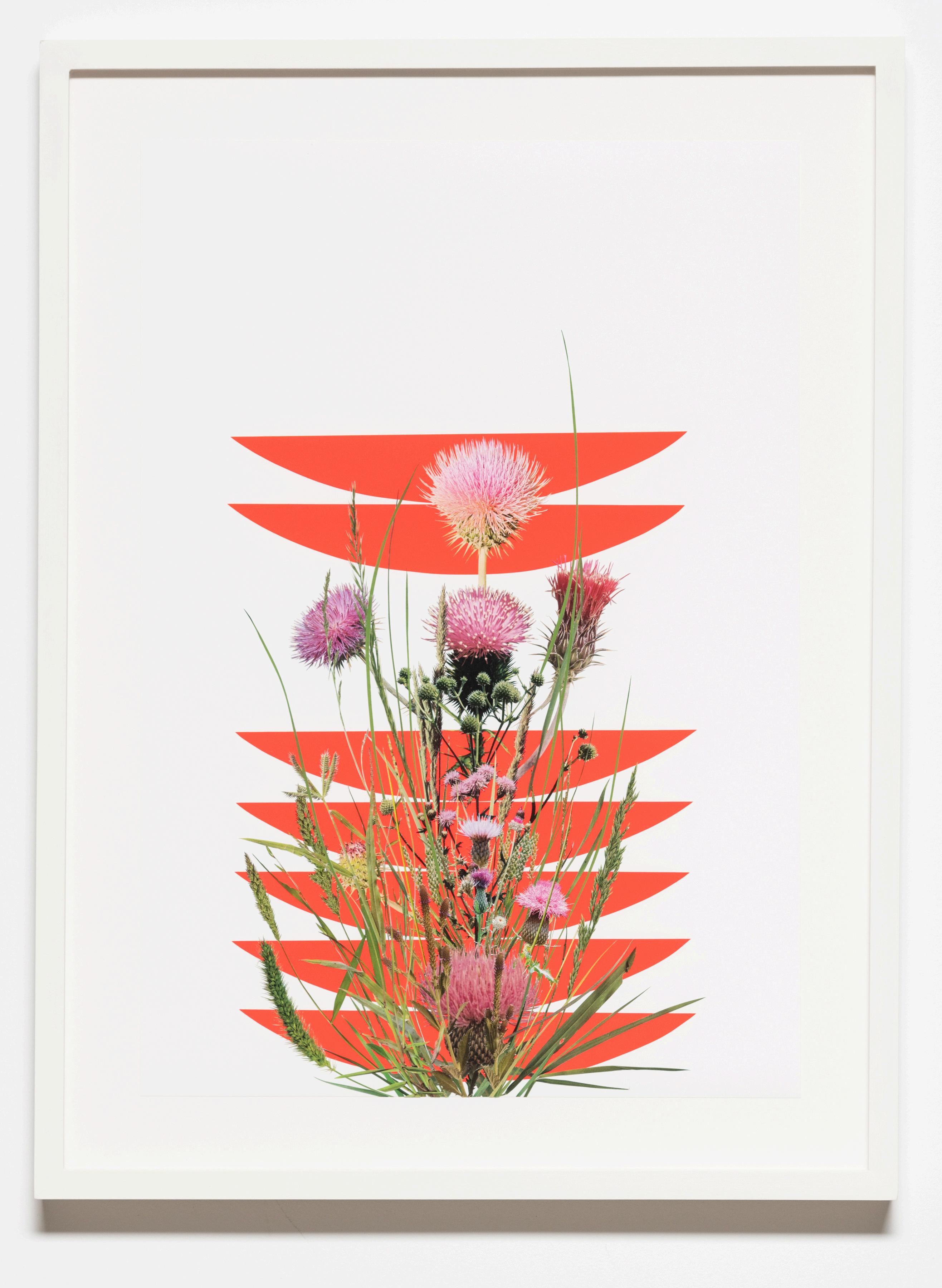
The Thistle, 2023 collage and vinyl on archival matboard 16.75 x 22.5 inches

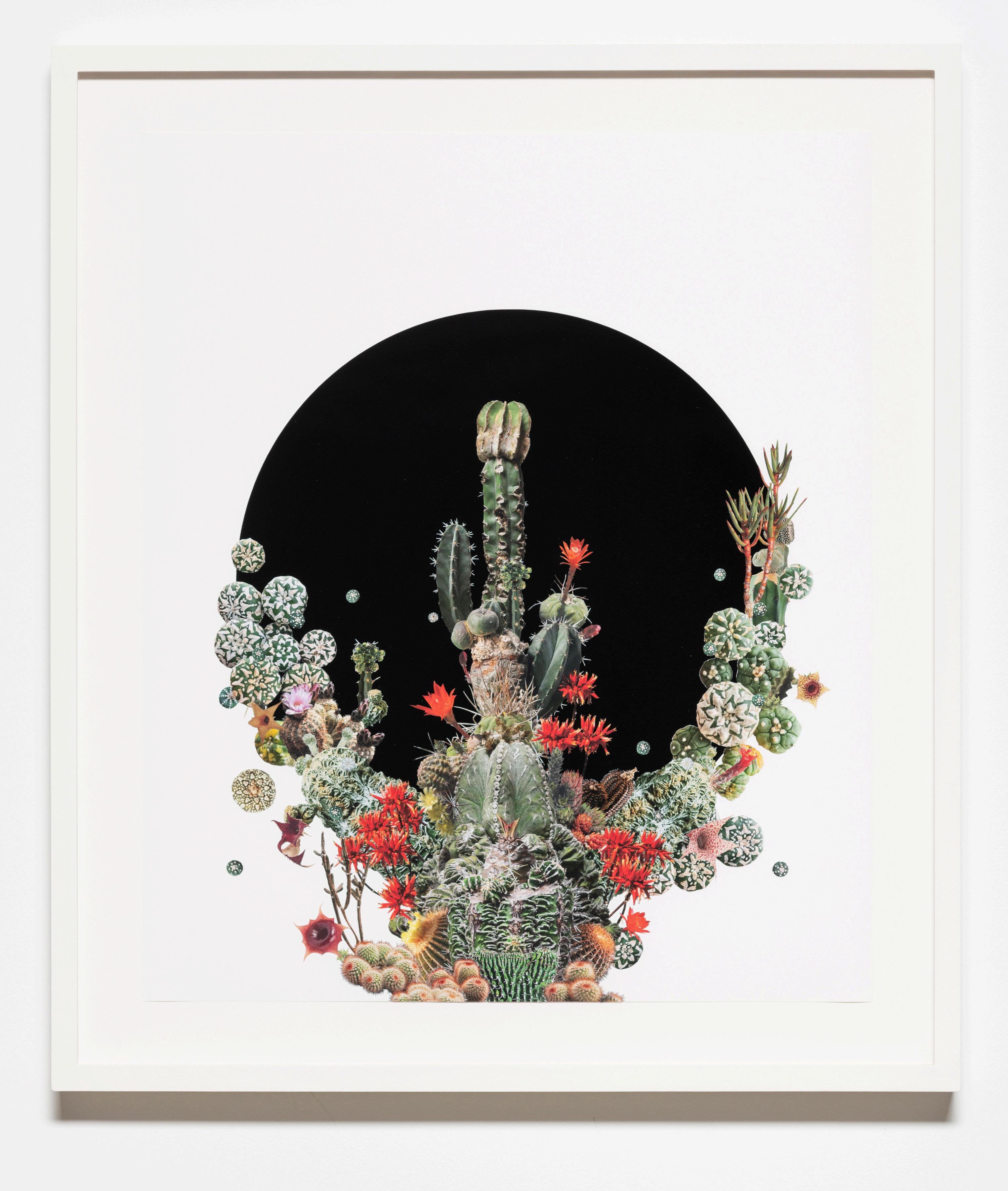
Black Circle (Voidground), 2024 collage and vinyl on archival
matboard
20 x 22.75 inches


Mono (Voidground), 2024 collage and vinyl on archival
13 x 15.75 inches
matboard


Stepped Lophophora (Voidground), 2024 collage on archival paper 25 x 21 inches


Cono (Voidground), 2024 collage and vinyl on archival paper 18.75 x 16 inches
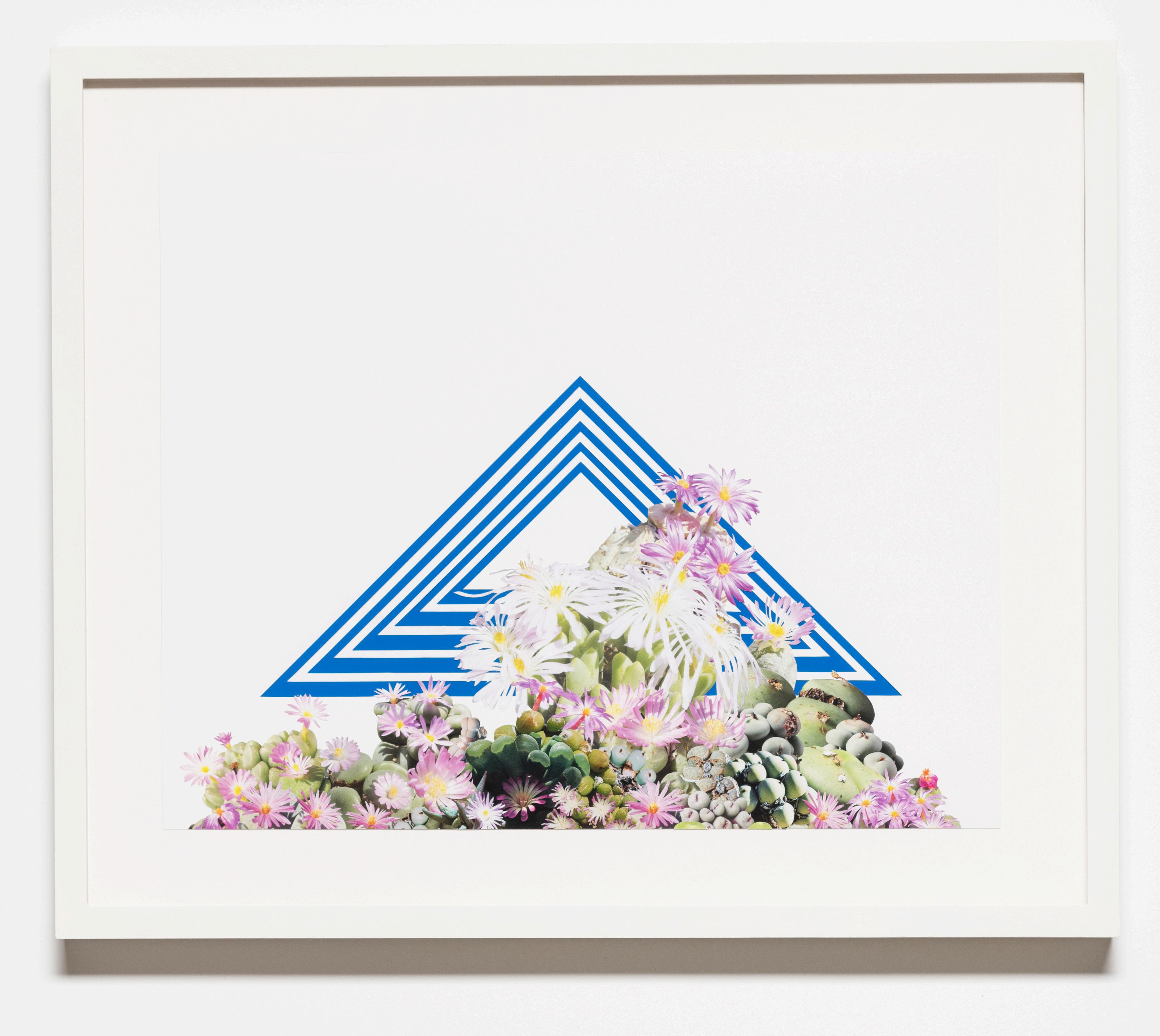
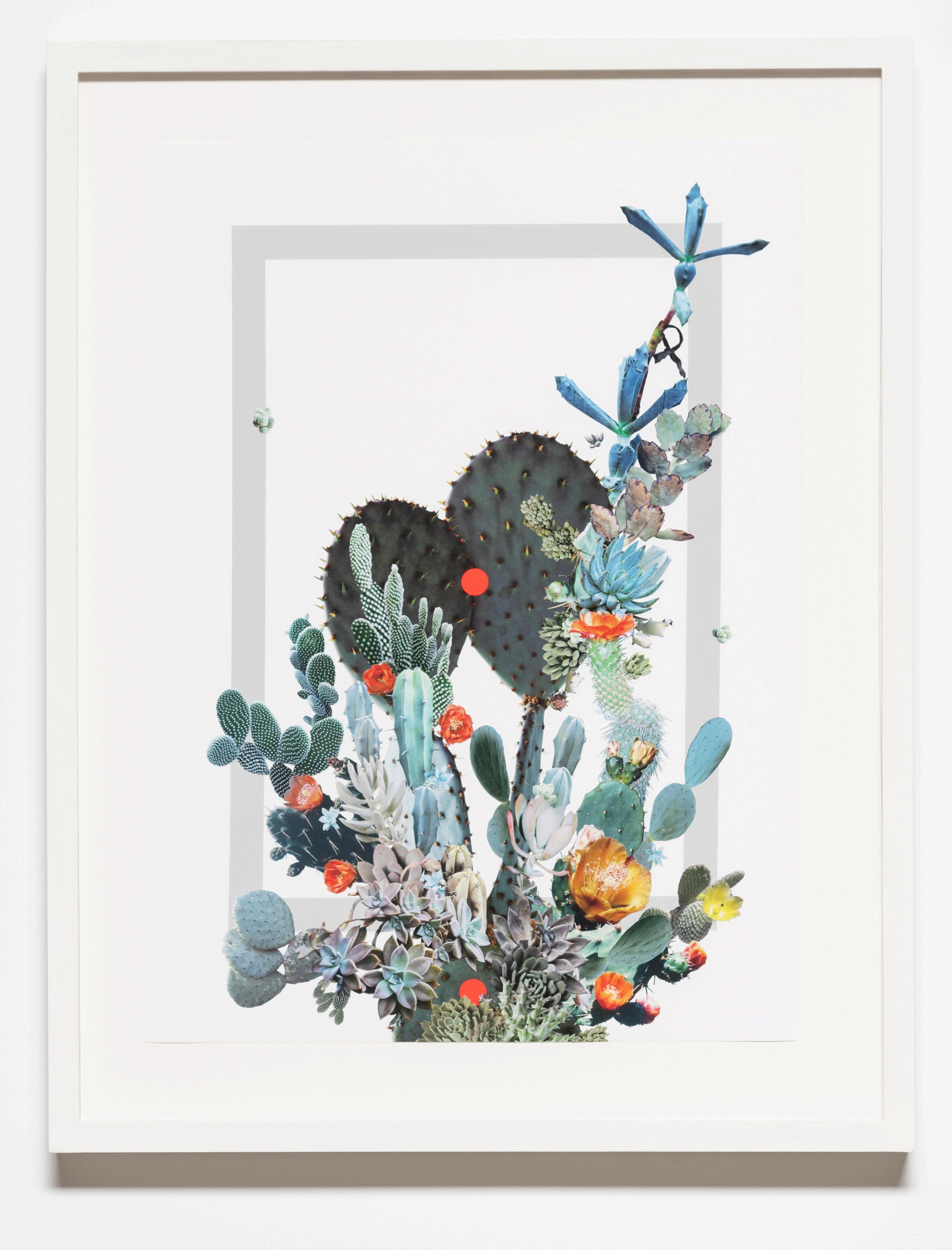
Blue Paddles (Voidground), 2024 collage and vinyl on archival paper 16 x 20.25 inches


Stepped Stack (Voidground), 2024 collage and vinyl on archival paper 23.75 x 16 inches

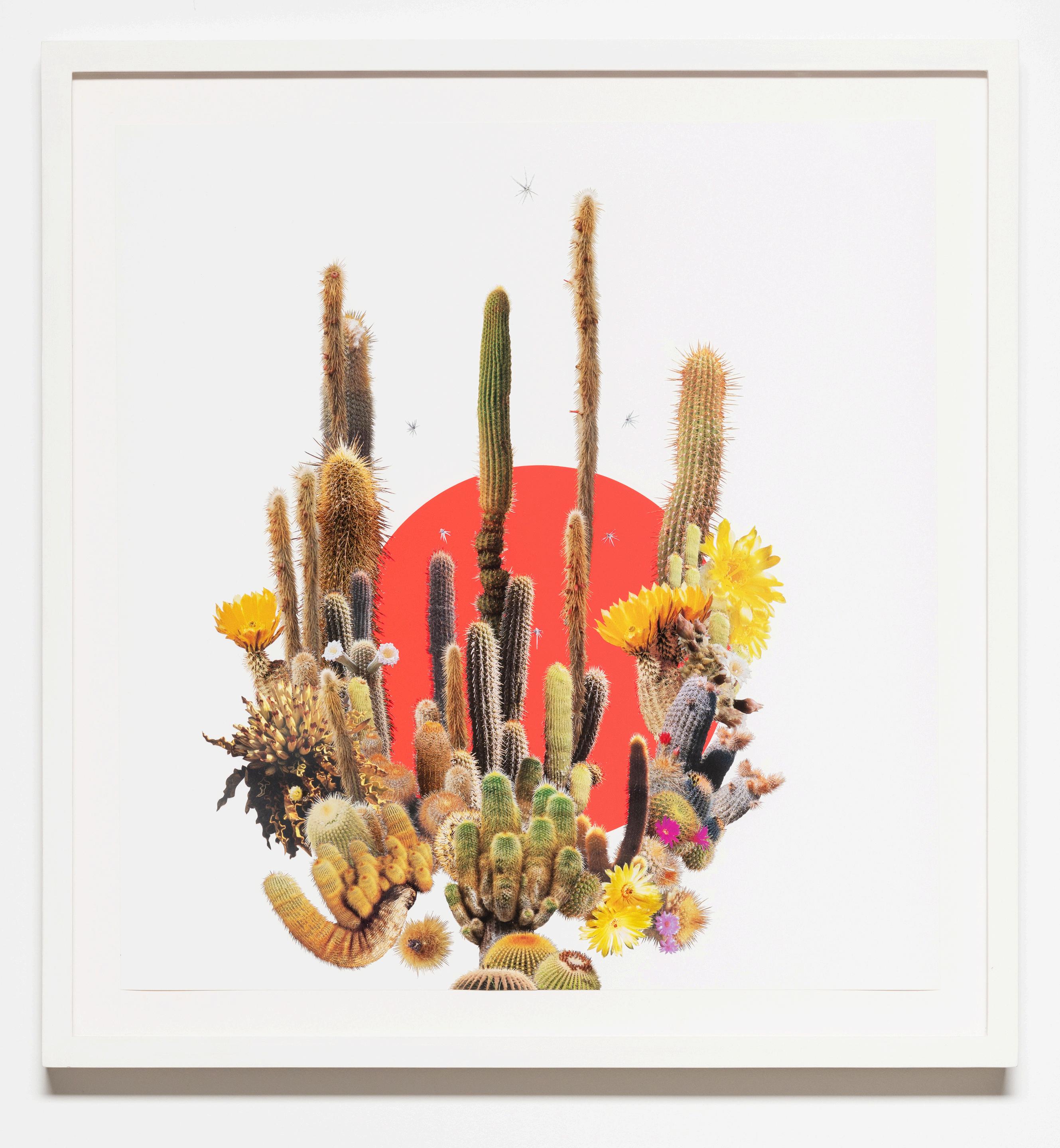
Orange Circle (Voidground), 2024 collage and vinyl on archival paper 18 x 19 inches

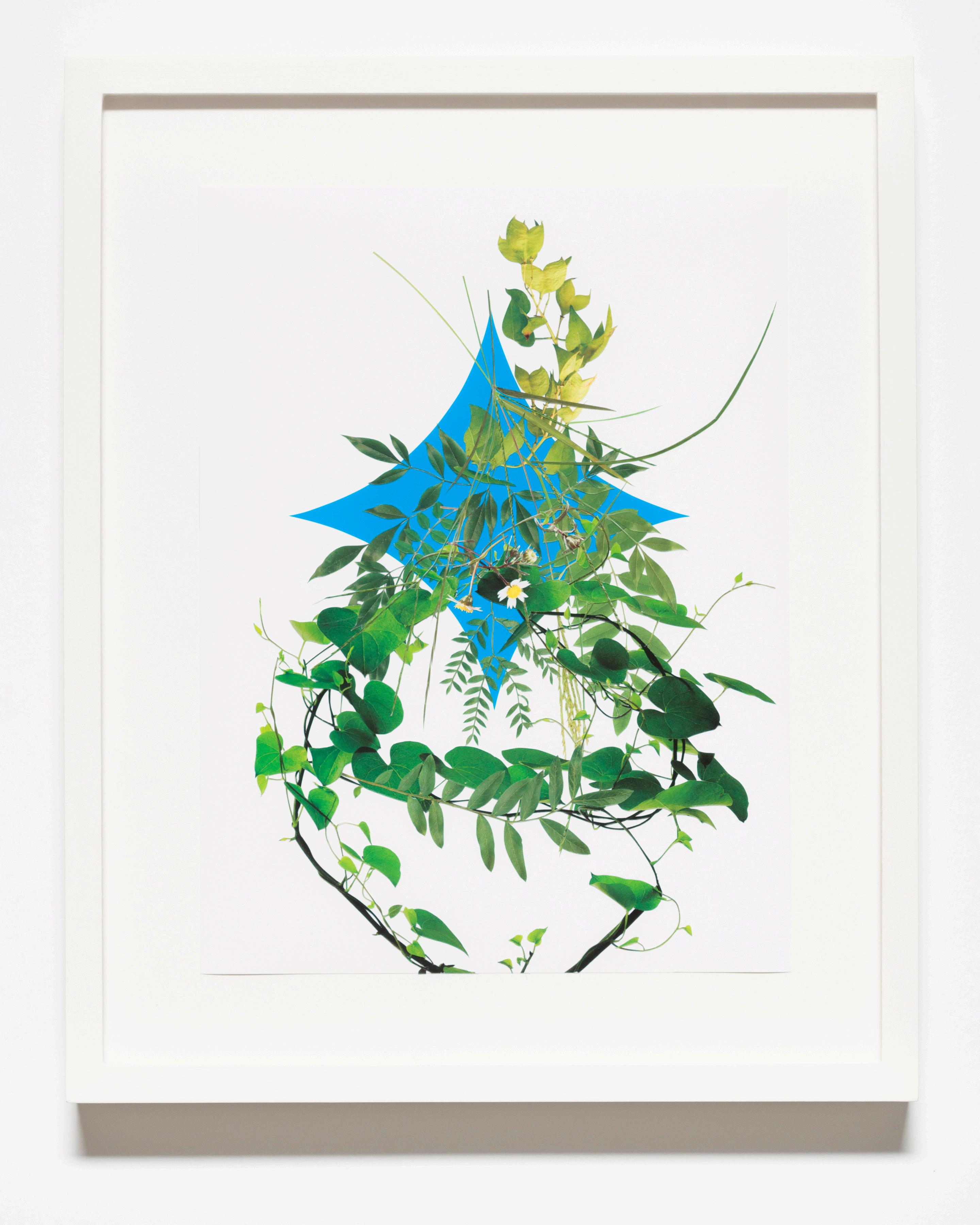
Two Flowers (Voidground), 2024 collage and vinyl on archival paper 13 x 16 inches

Selections from the Artist’s Library
Laird, Mark and Alicia Weisberg-Roberts, Mrs Delaney and Her Circle (Yale Center for British Art, 2009)
Rowley, Gordon Douglas, A History of Succulent Plants (Strawberry Press, 1997)
Trévelo, Pierre Alain, The Earth Is Architecture (Spector Books, 2020)
Wall Kimmerer, Robin, Braiding Sweetgrass: Indigenous Wisdom, Scientific Knowledge and the Teaching of Plants (Milkweed Editions, 2020)
Morton, Timothy, Dark Ecology: For a Logic of Future Coexistence (Columbia University Press, 2016)
VanderMeer, Jeff, Southern Reach (4 book series). (Farrar Straus & Giroux, 2014)
Hinton, Charles H., Speculations on the Fourth Dimension: Selected Writings of Charles H. Hinton. (Dover Publications, 1980)
Csikszentmihalyi, Mihaly and Eugene Halton, The Meaning of Things: Domestic Symbols and the Self. (Cambridge University Press, 1981)
Fuller, R. Buckminster, Utopia or Oblivion. (Lars Müller Publishers, 2019)
Herbert, Frank, Dune. (Ace, 2022)
Jodorowsky, Alejandro and Jean Giraud, The Incal. (Humanoids, Inc., 2020)
Moebius, Moebius Library: The World of Edena. (Dark Horse Books, 2016)



